
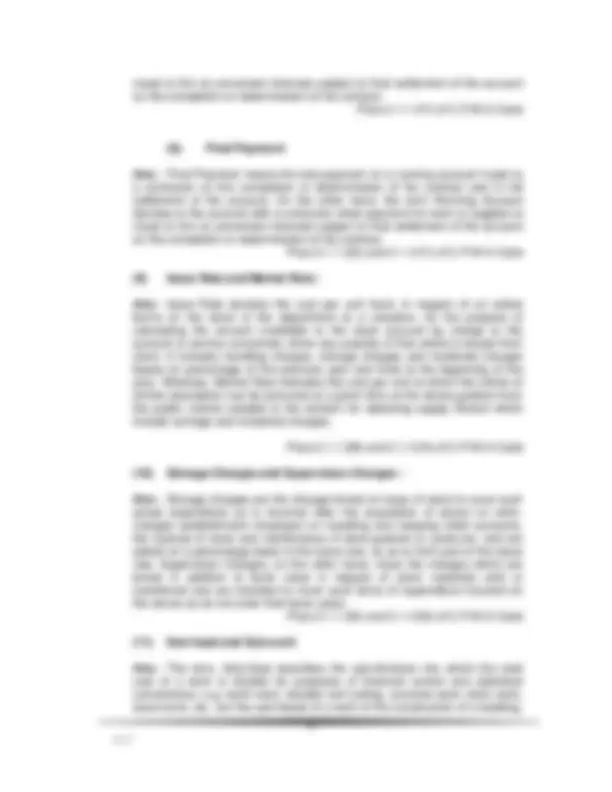
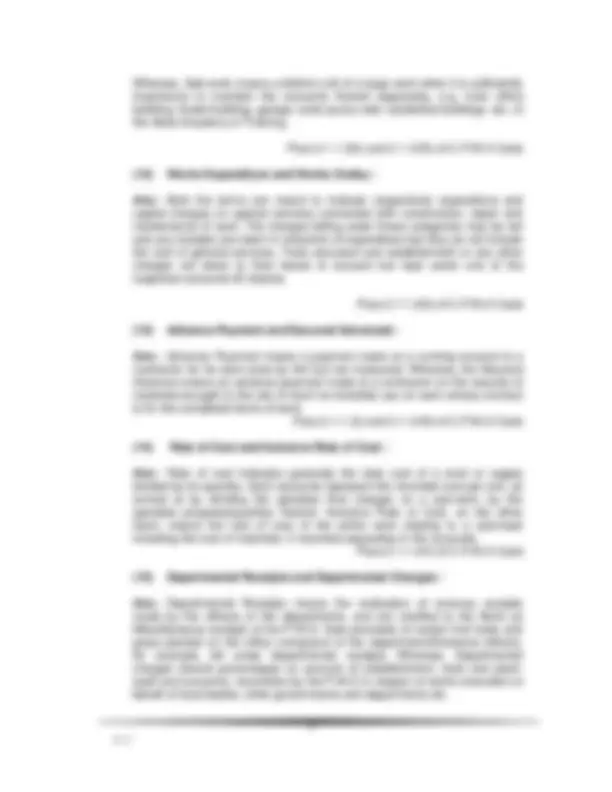
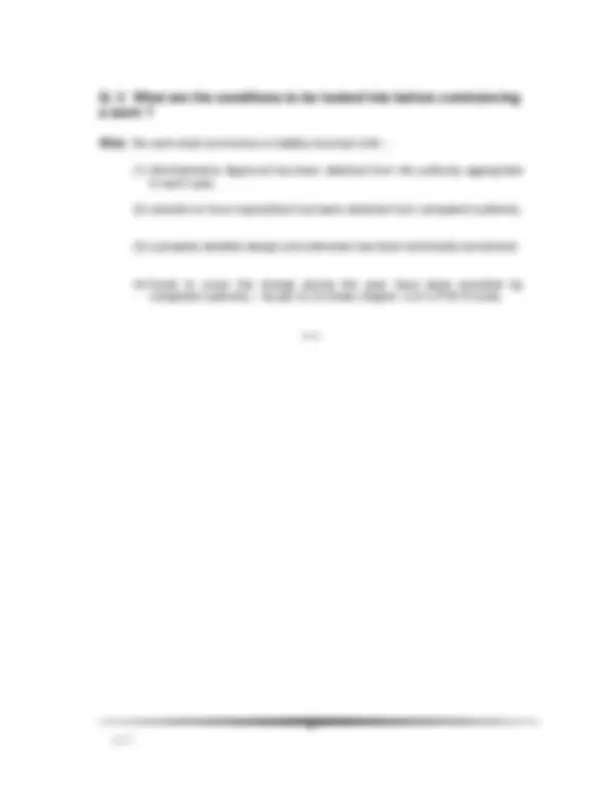
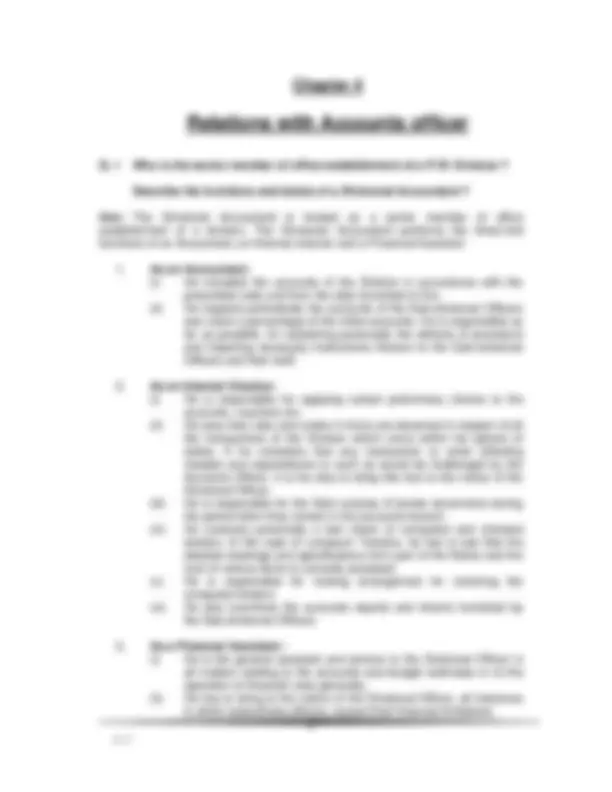
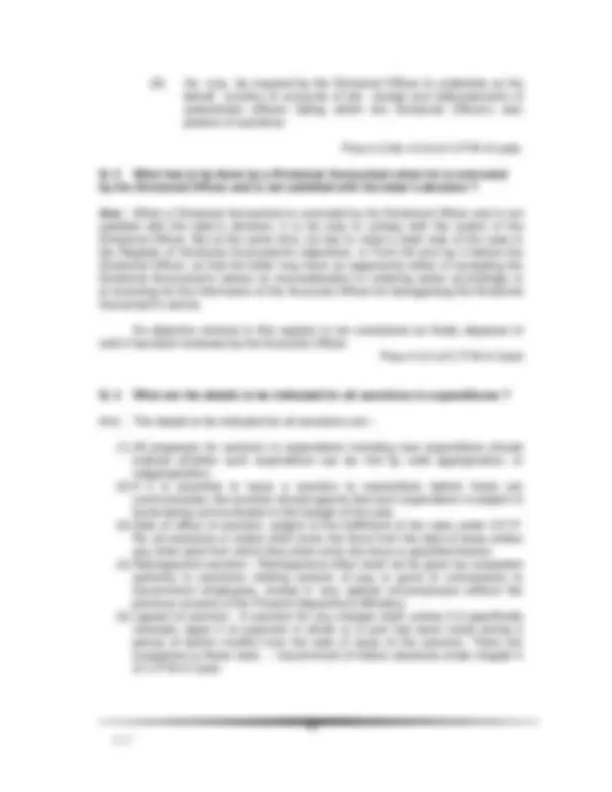
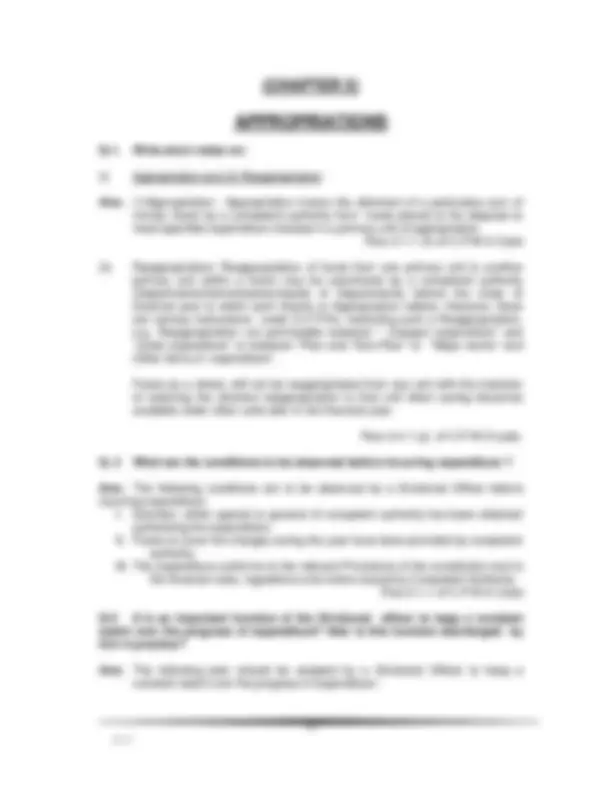
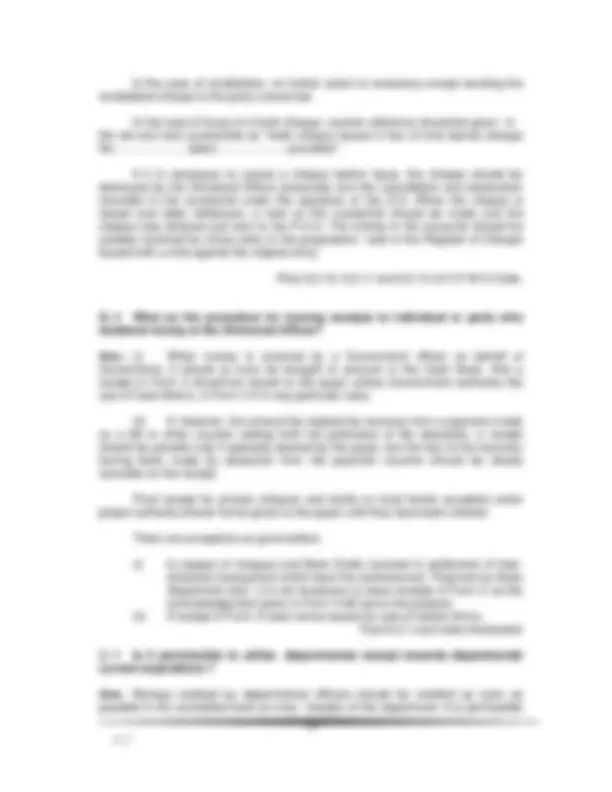
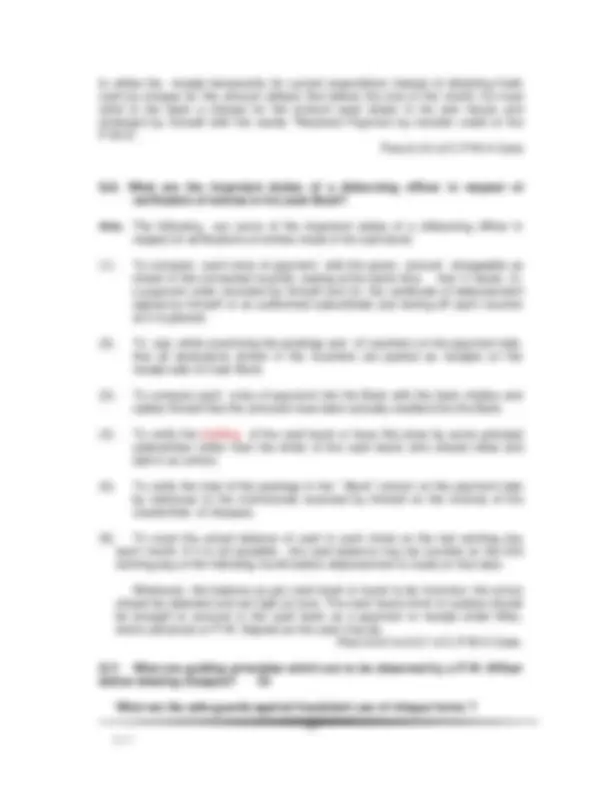
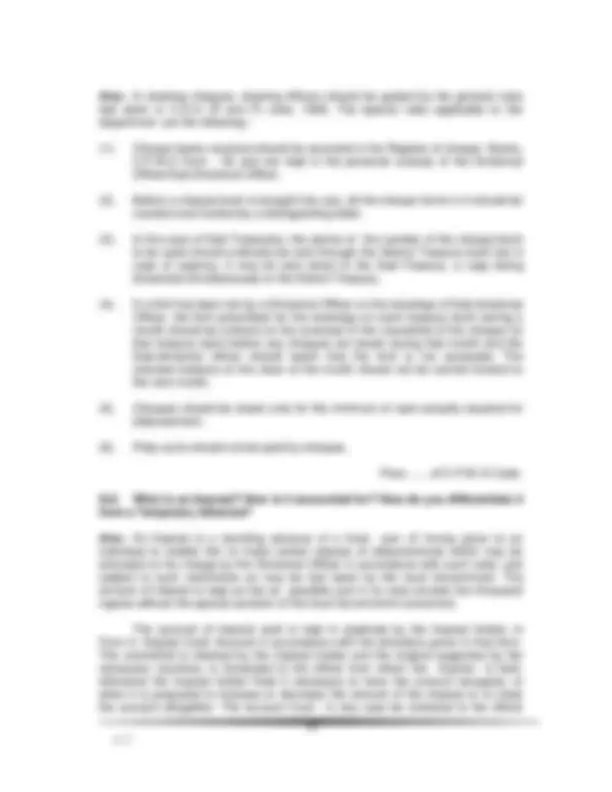
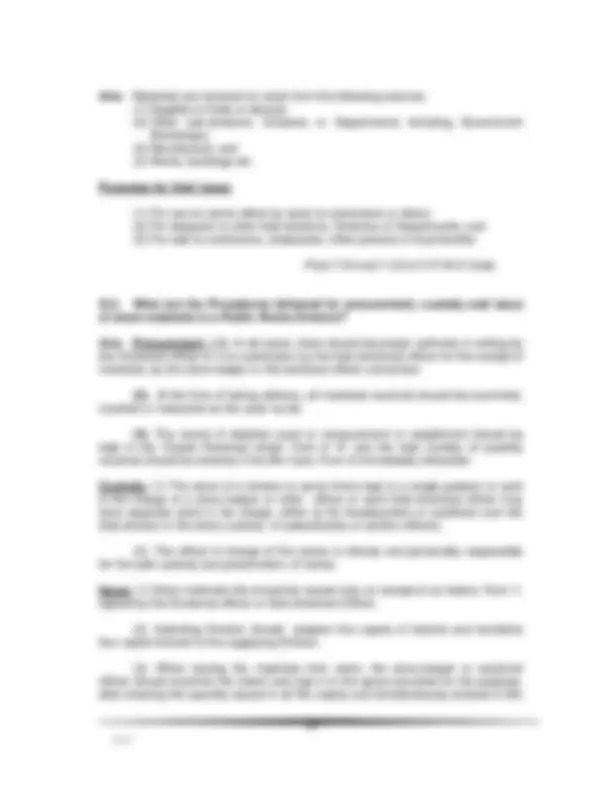
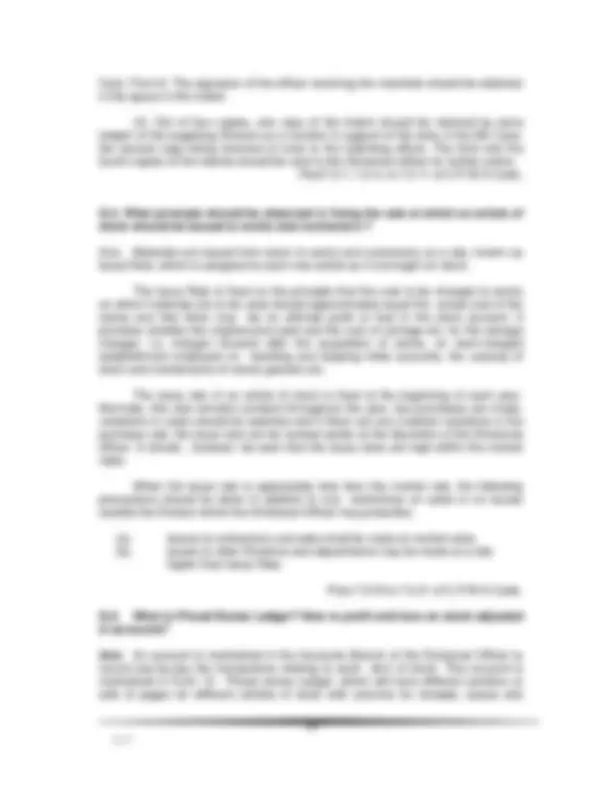
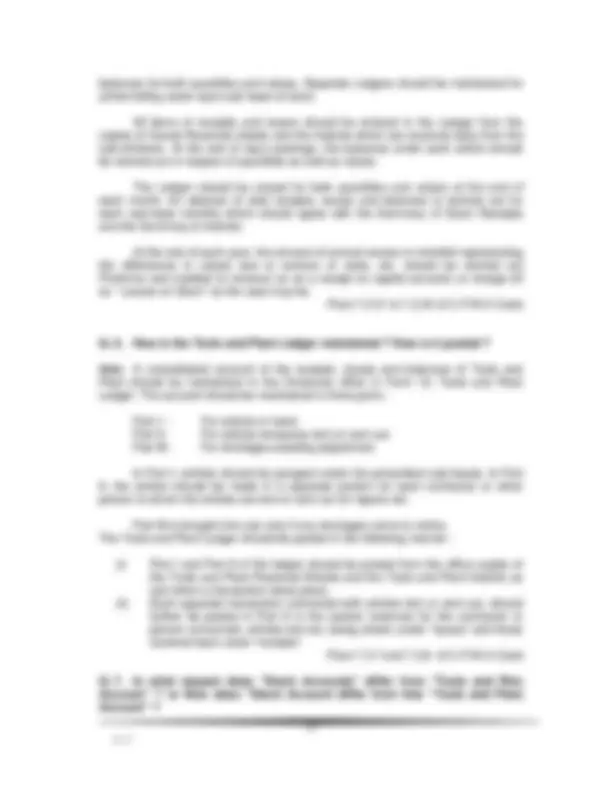
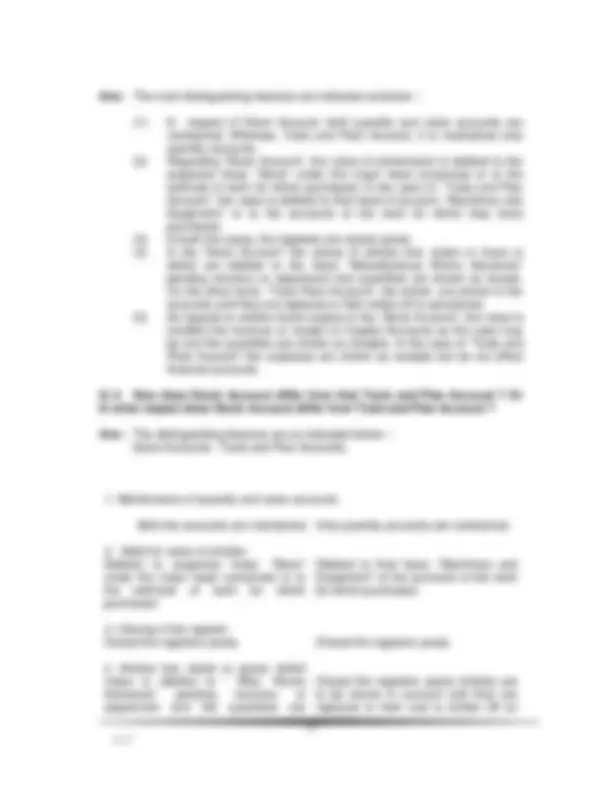
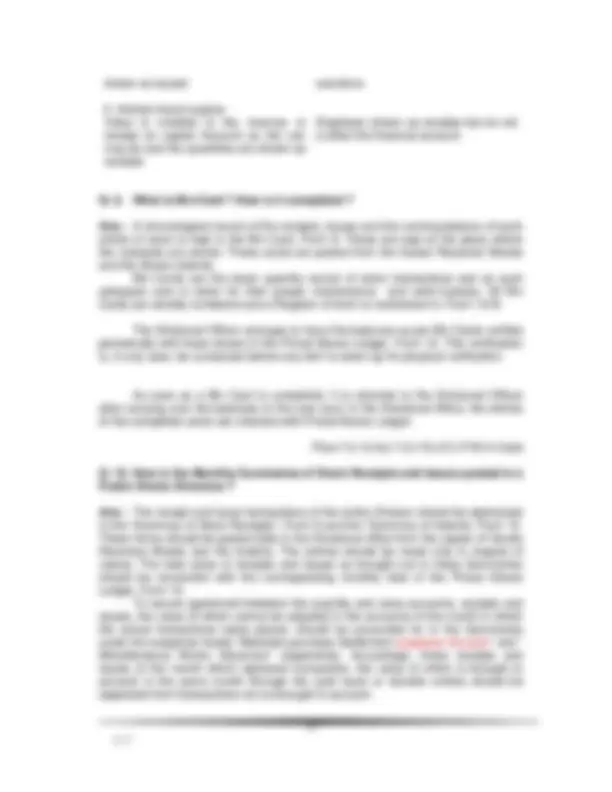

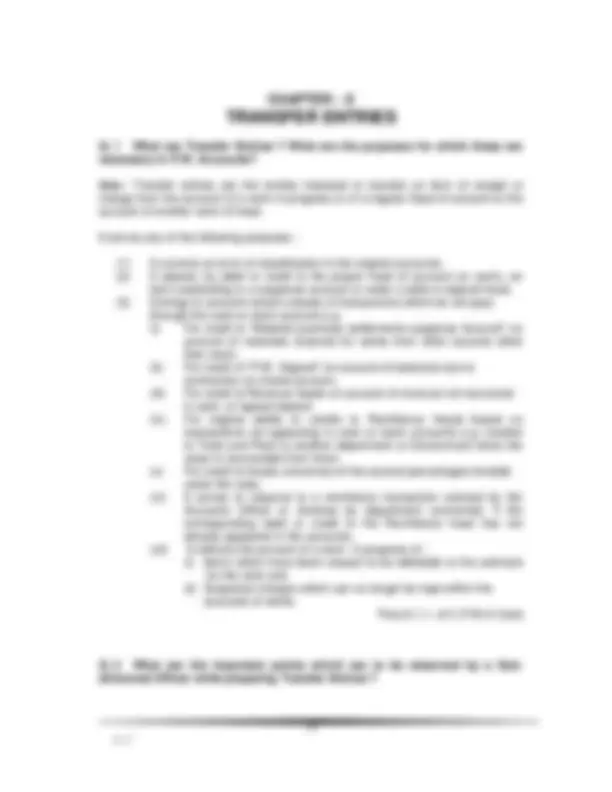
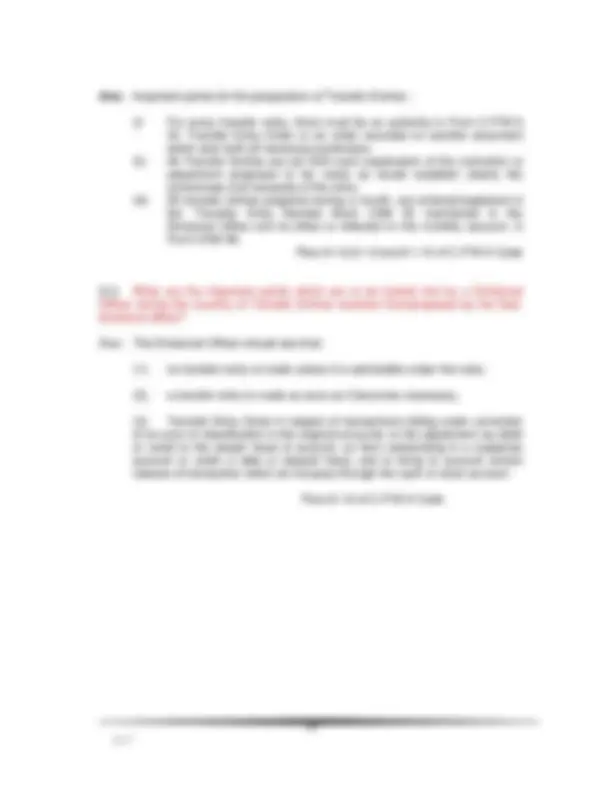
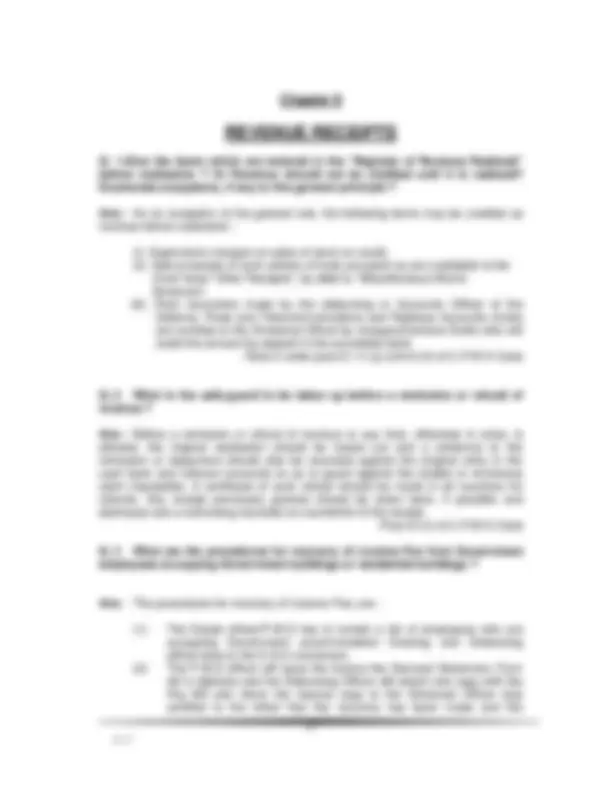
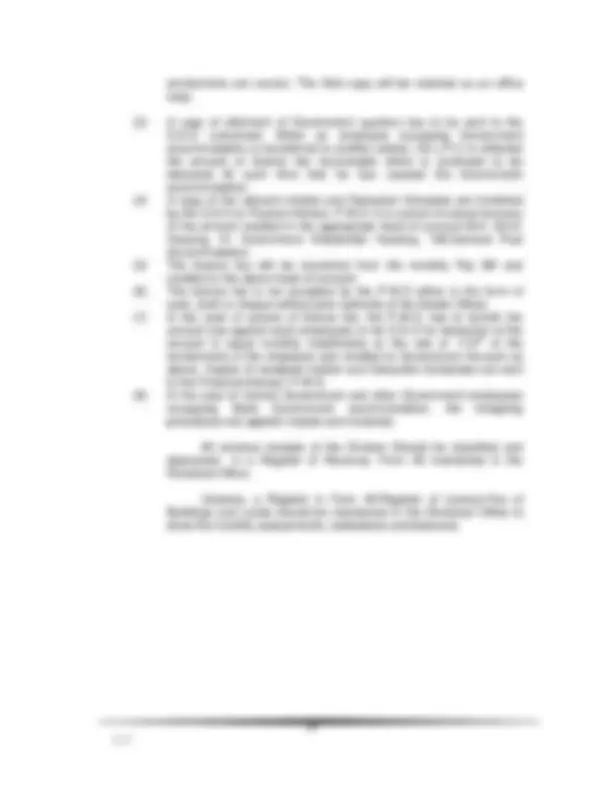
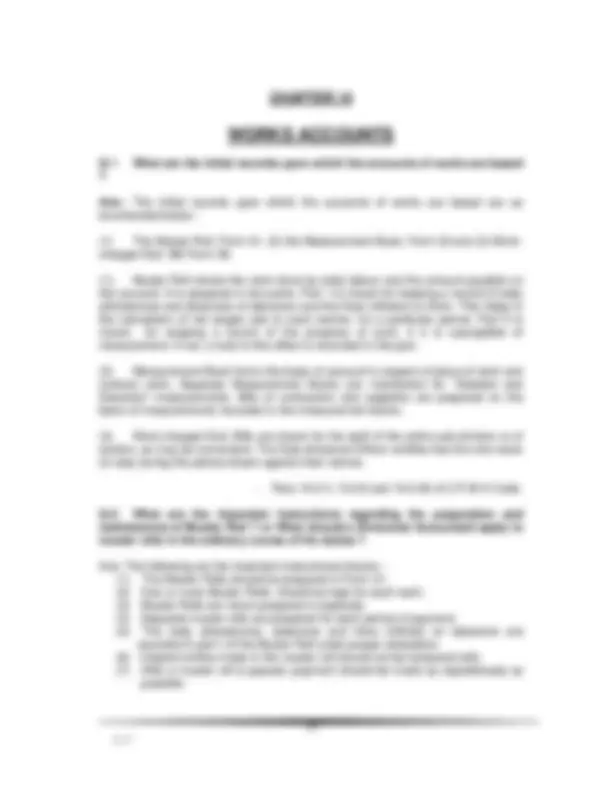
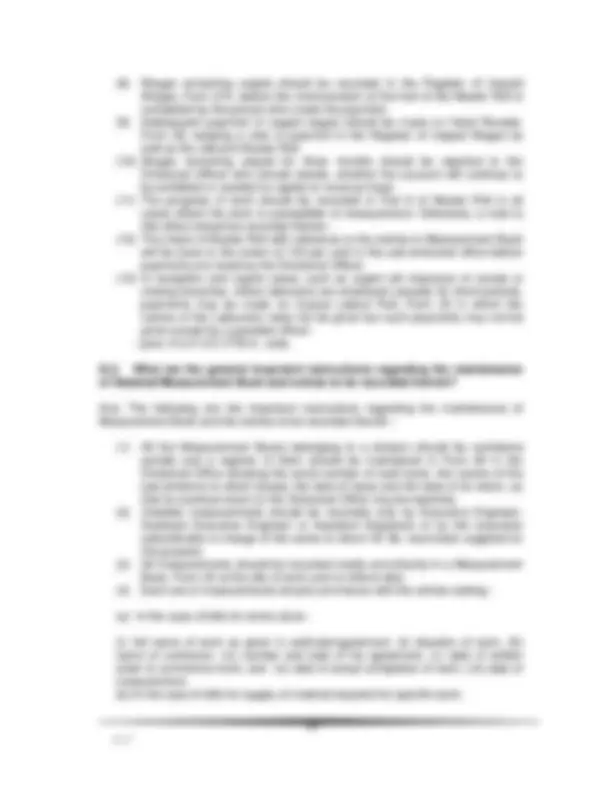
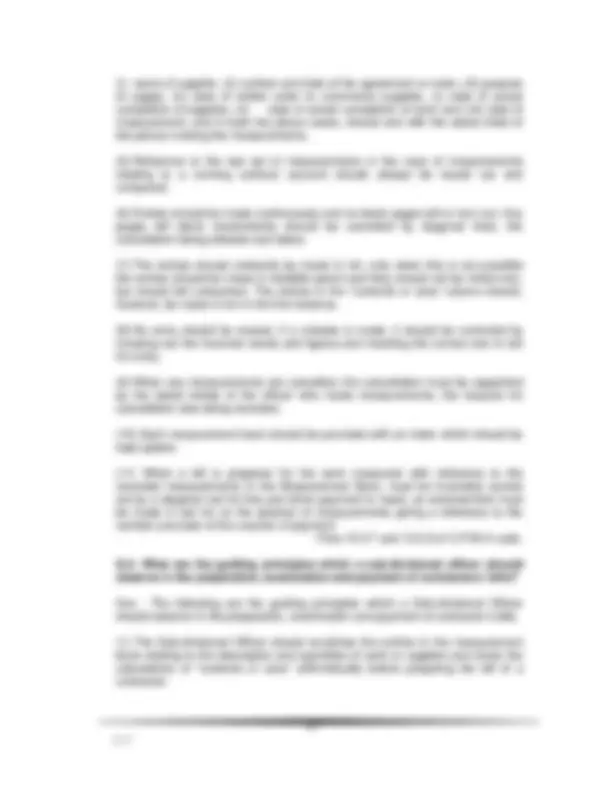
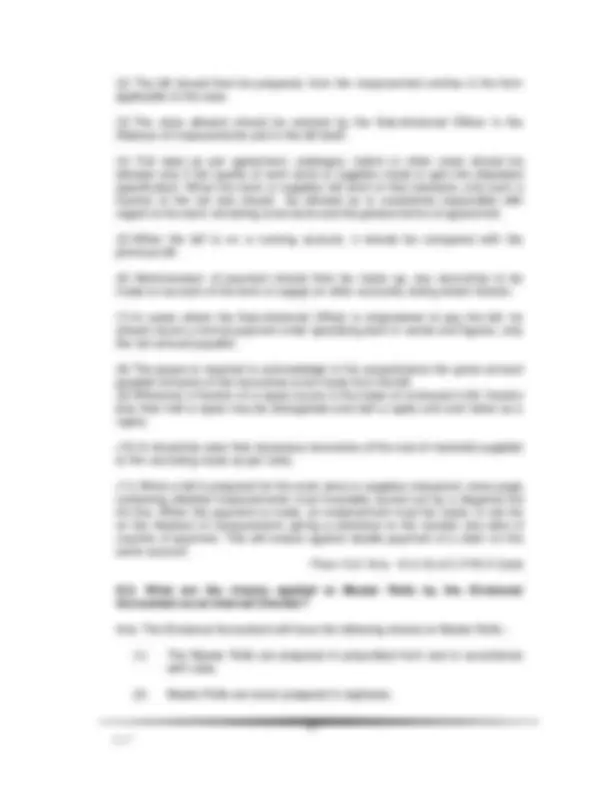
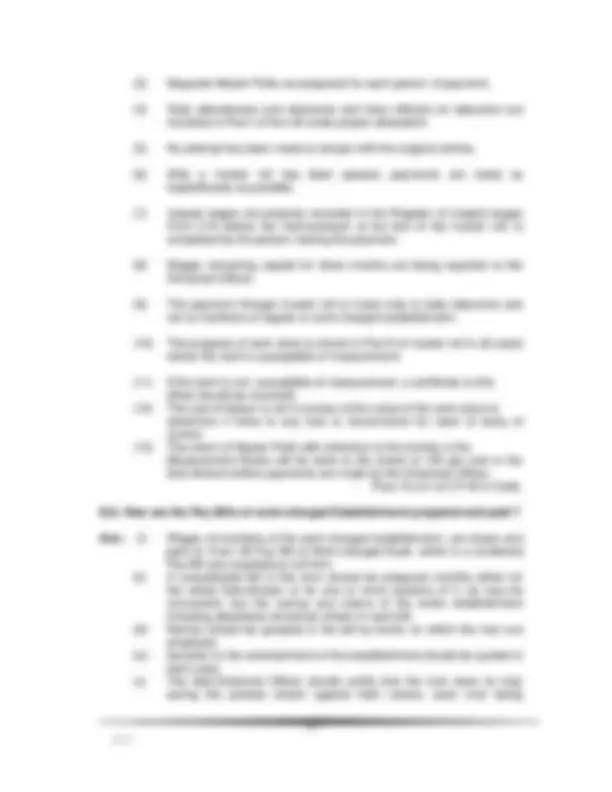
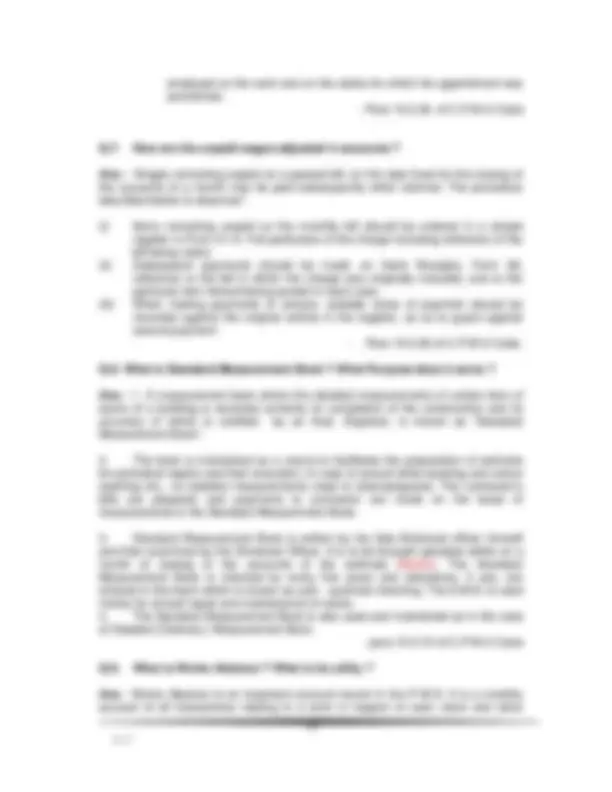
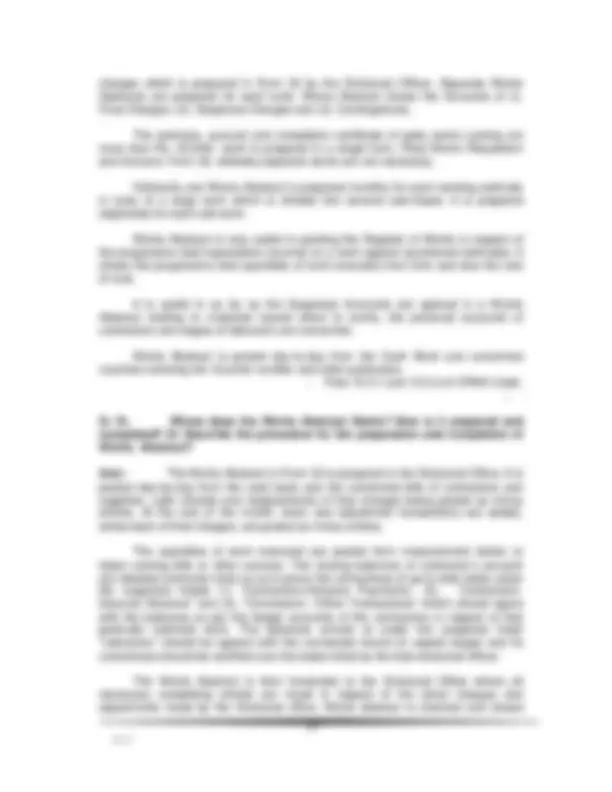
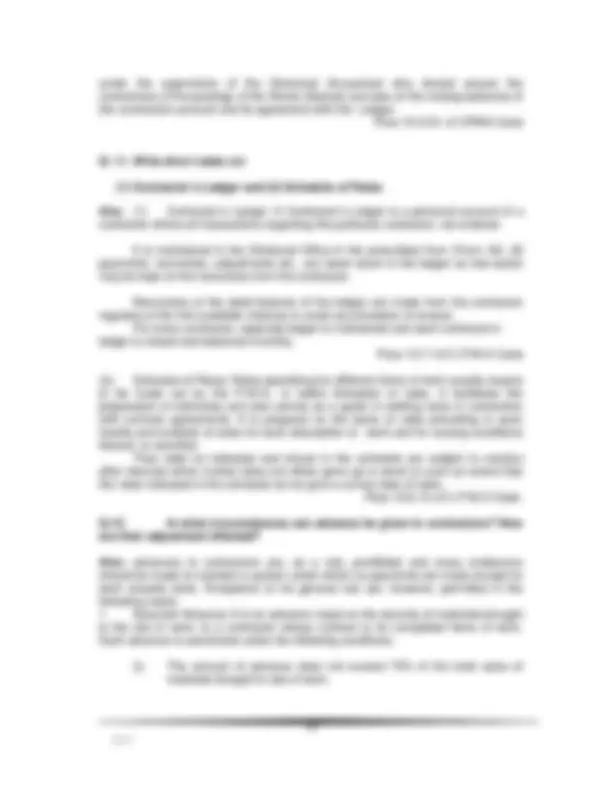
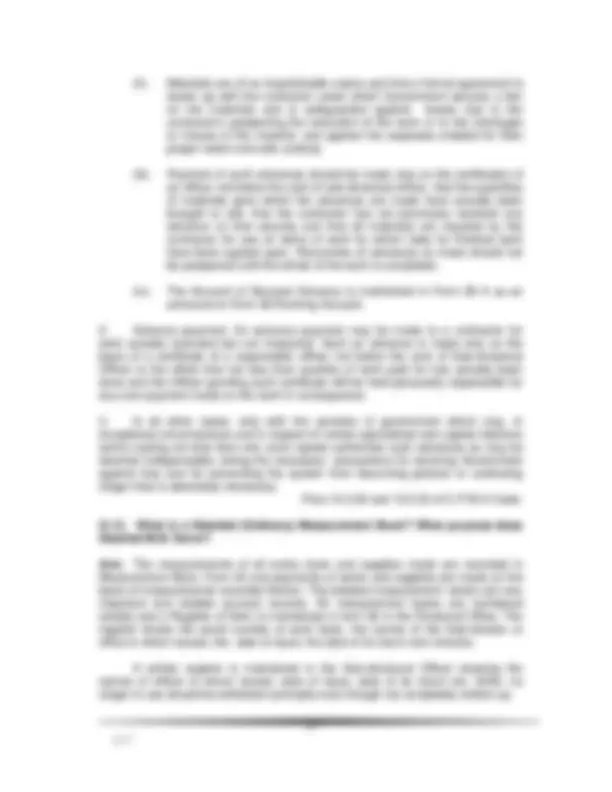
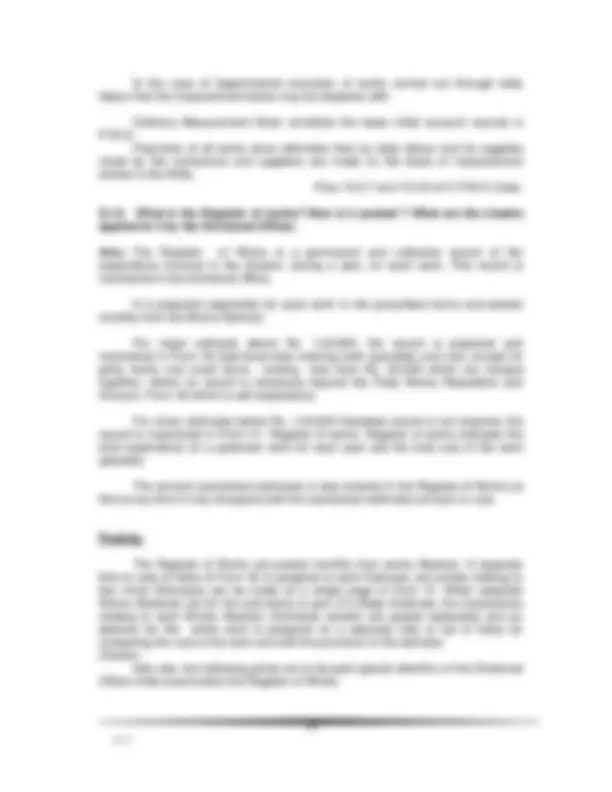
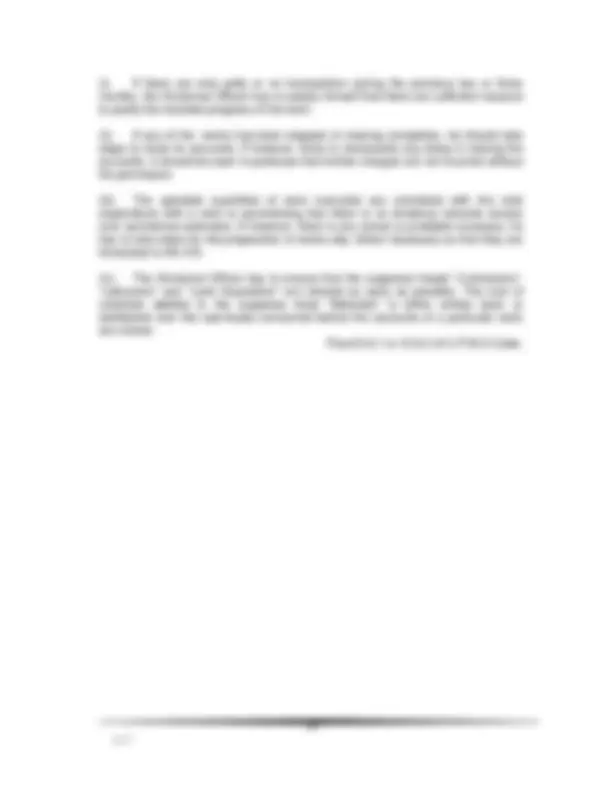
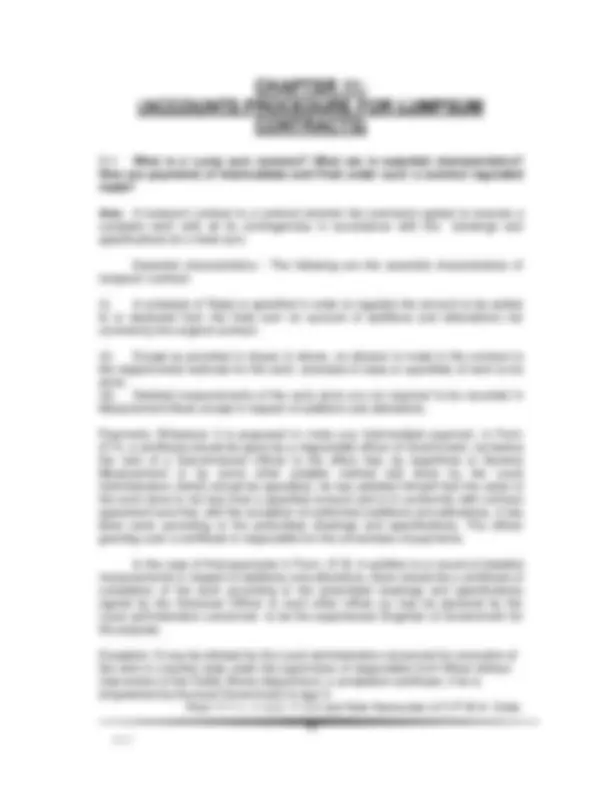
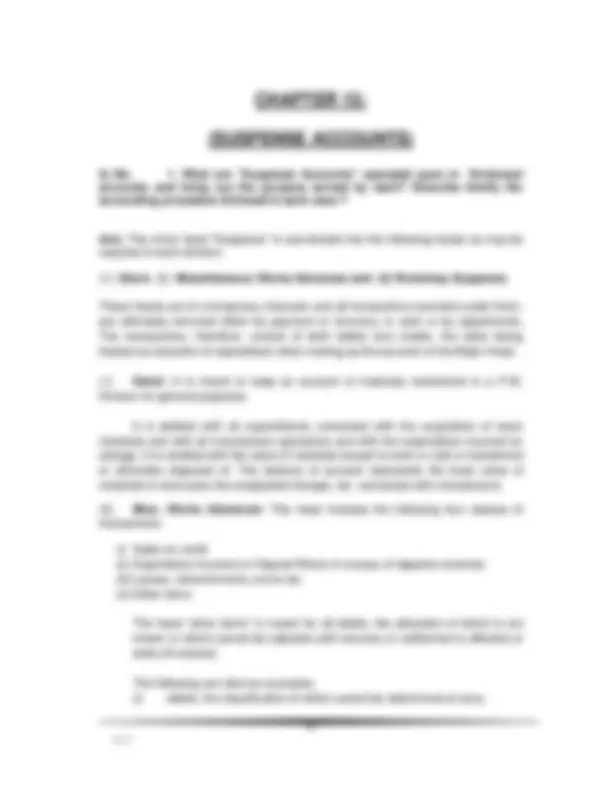
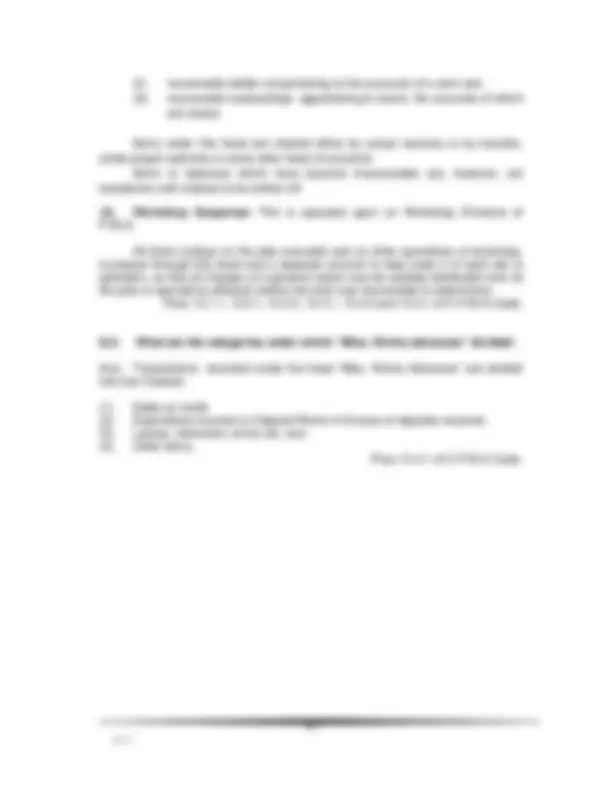
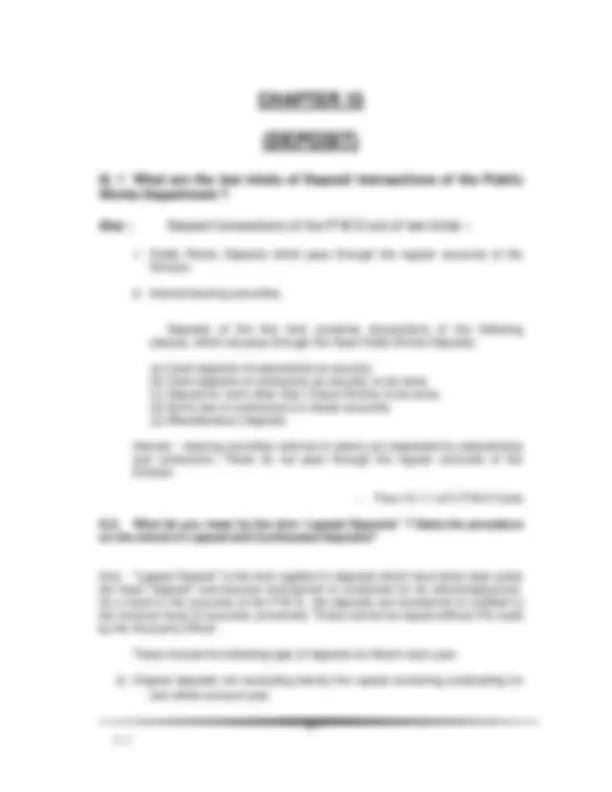
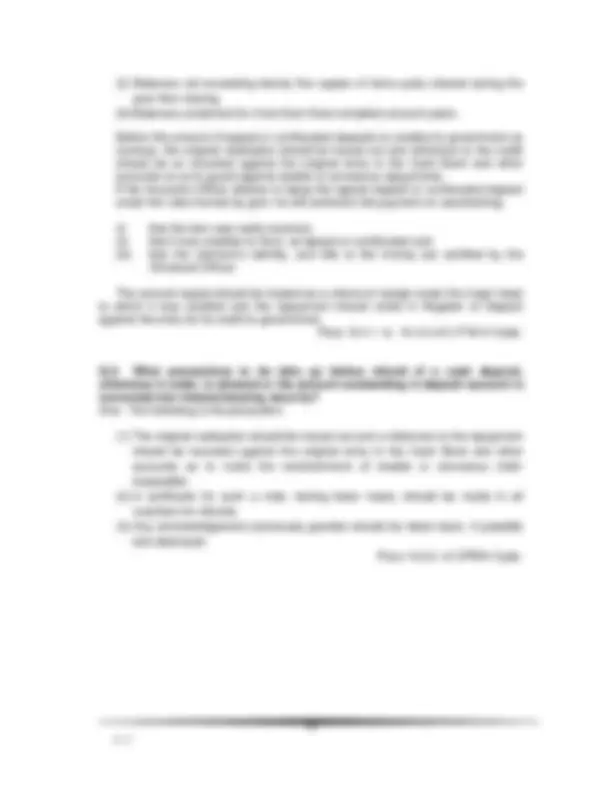
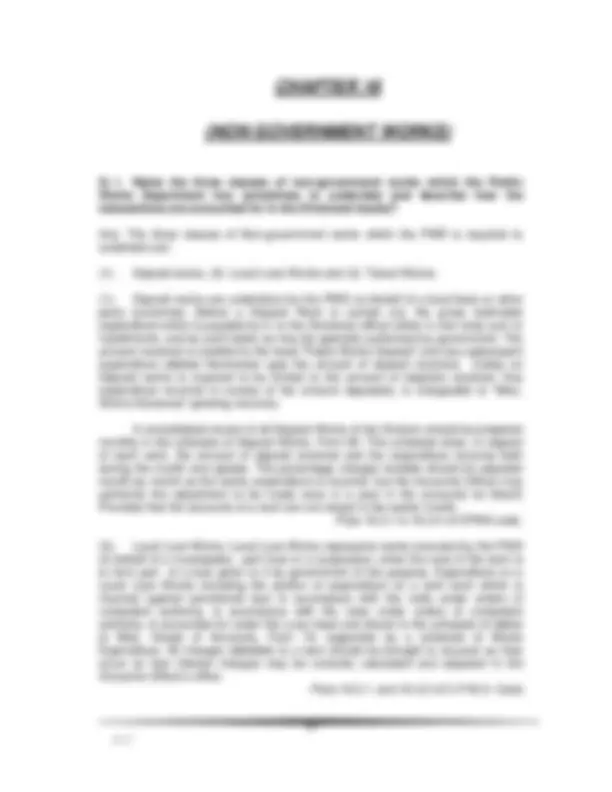
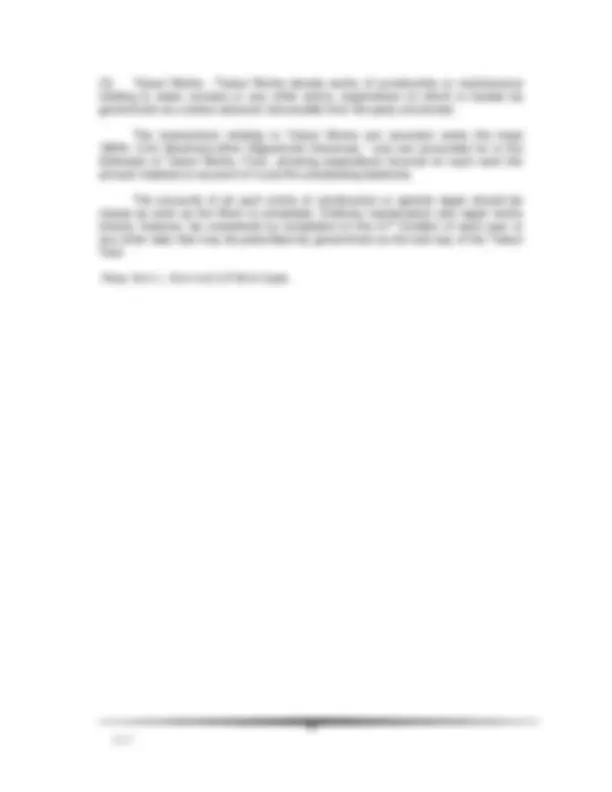
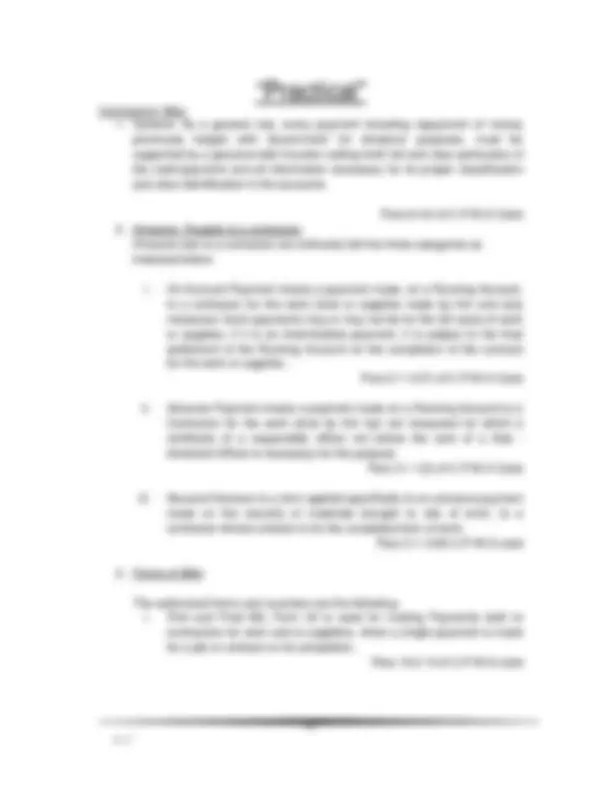
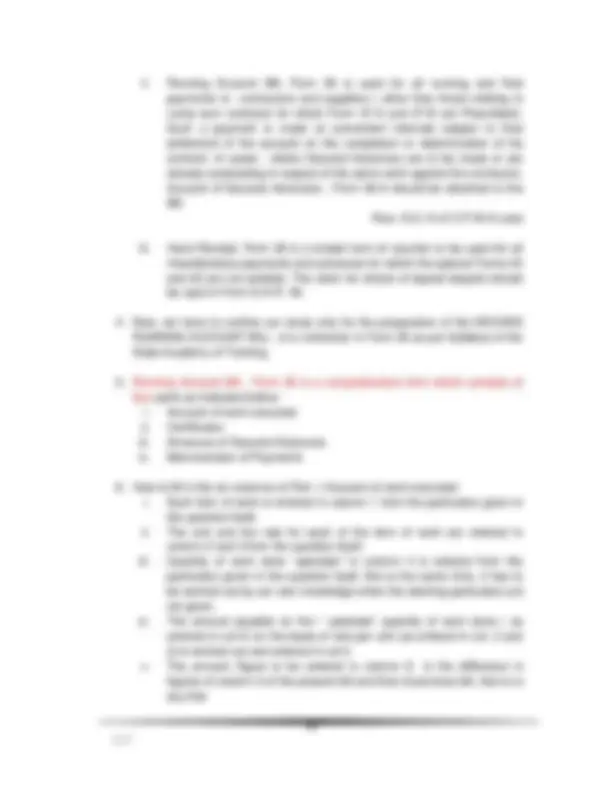
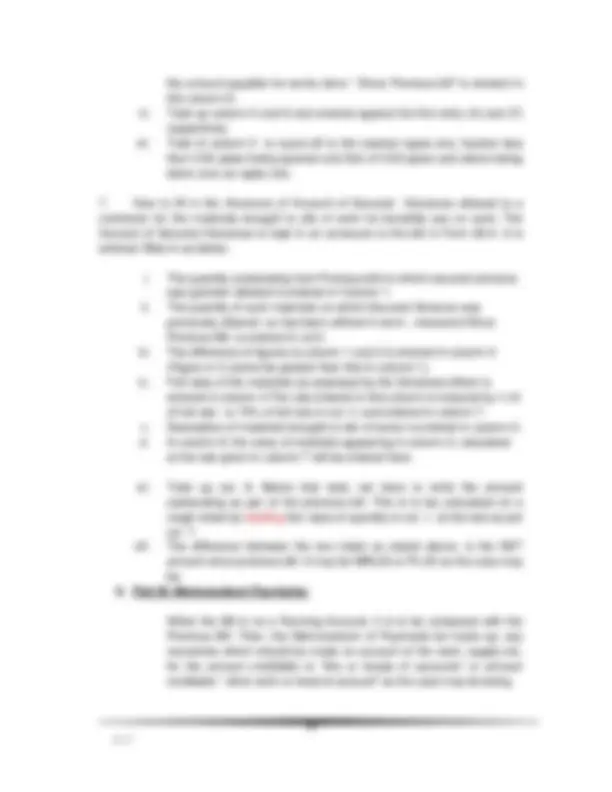
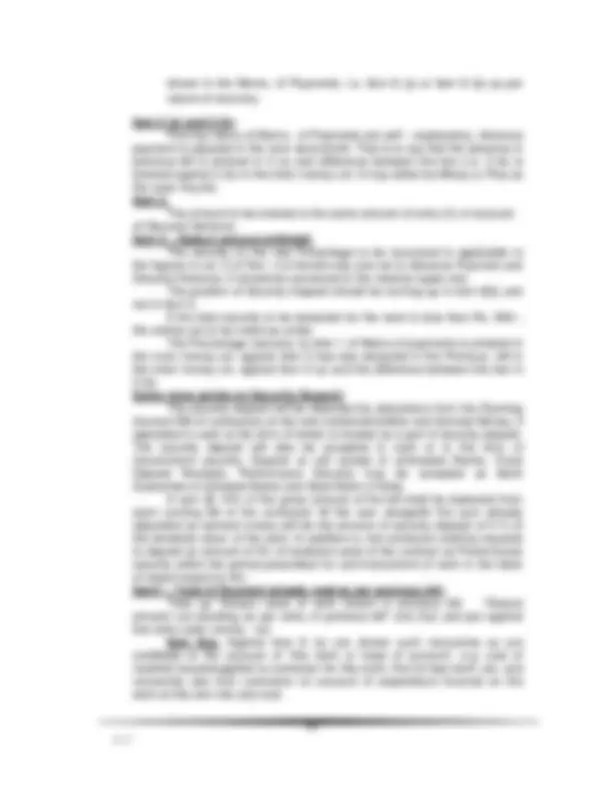
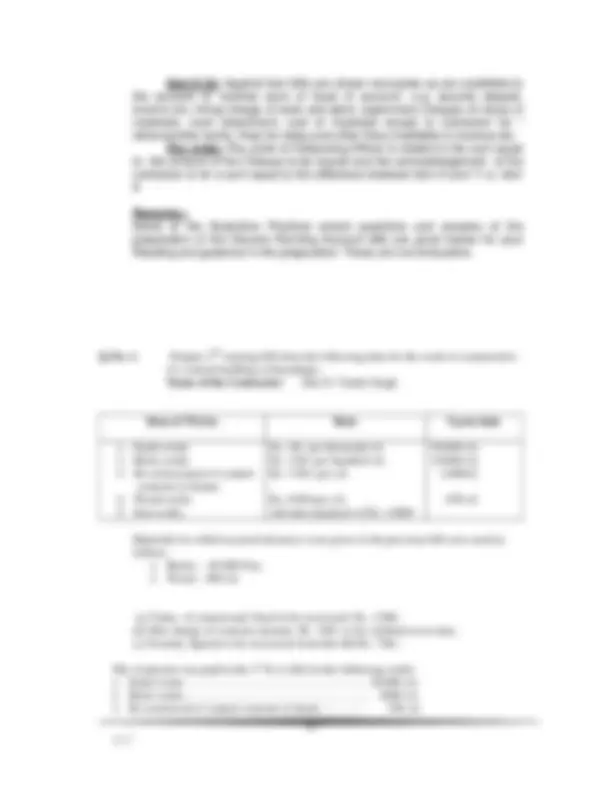

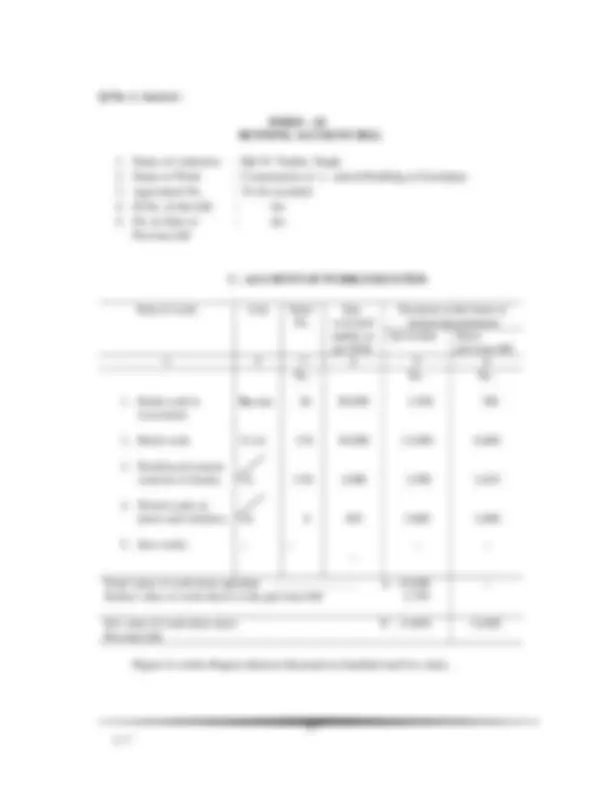
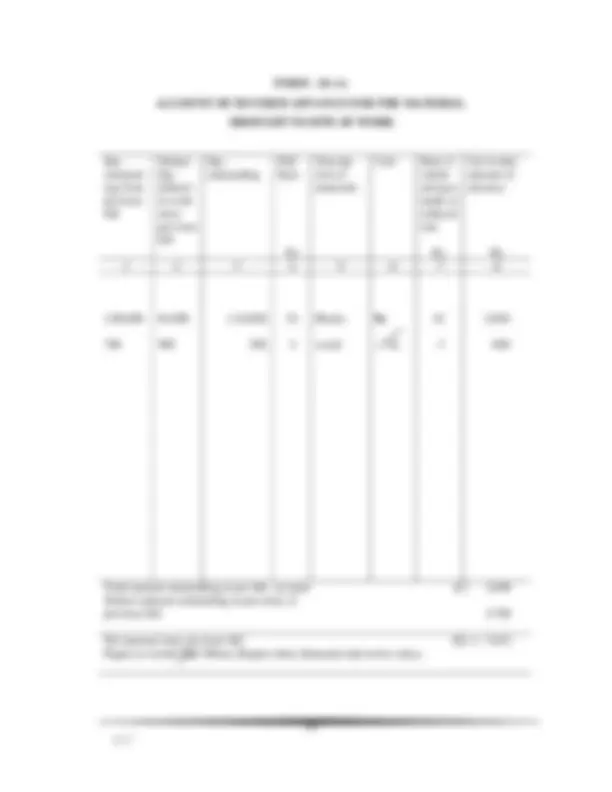
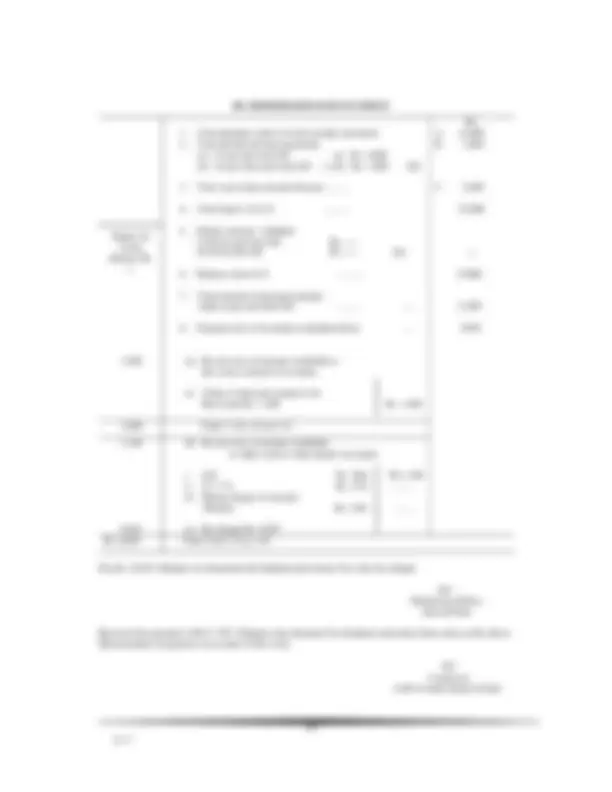
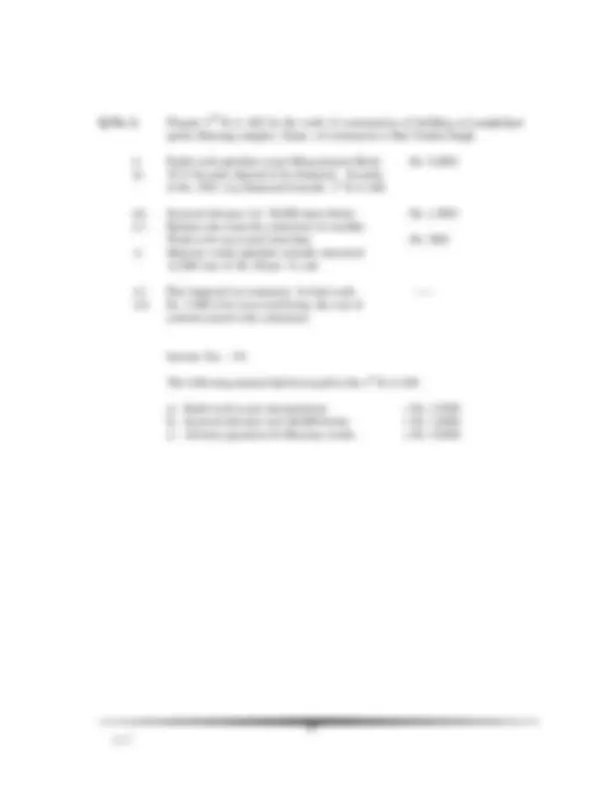
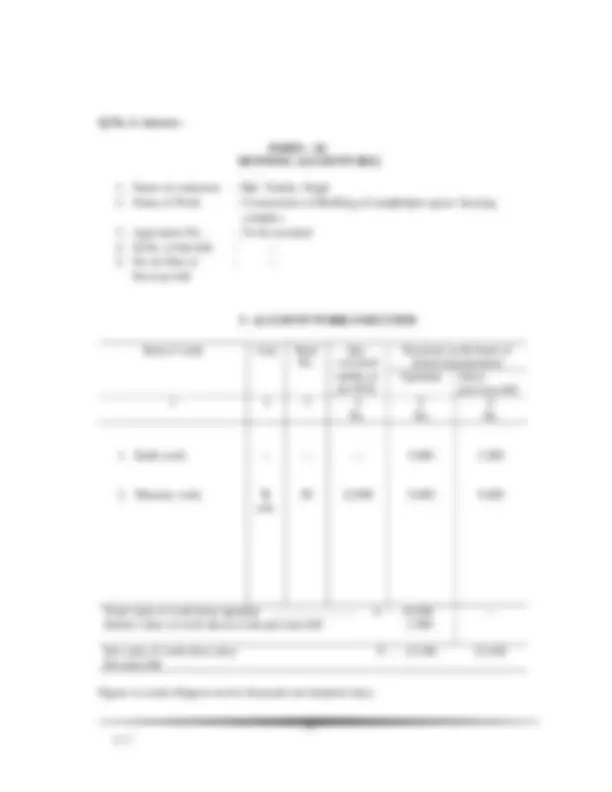
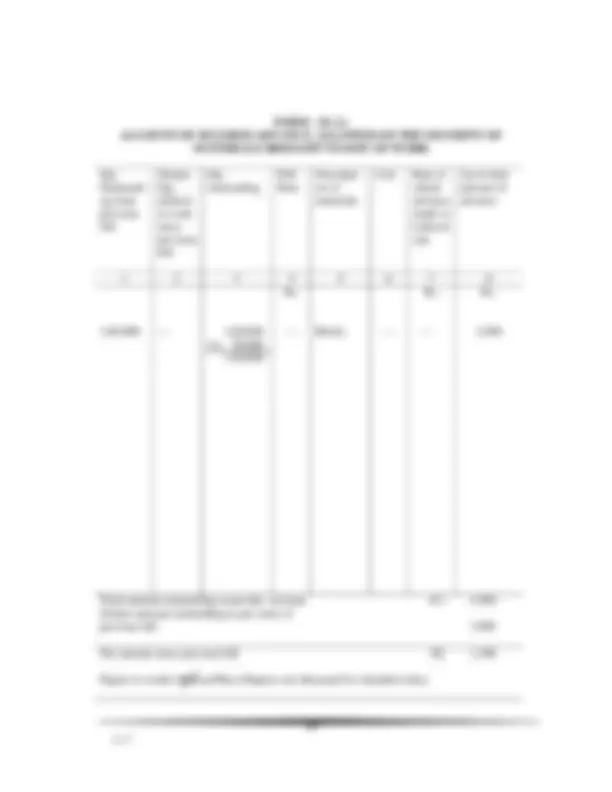
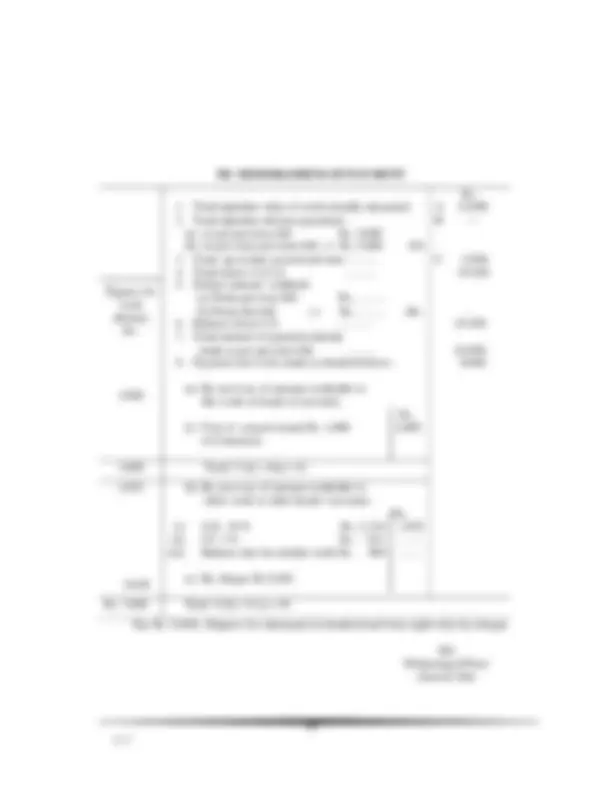
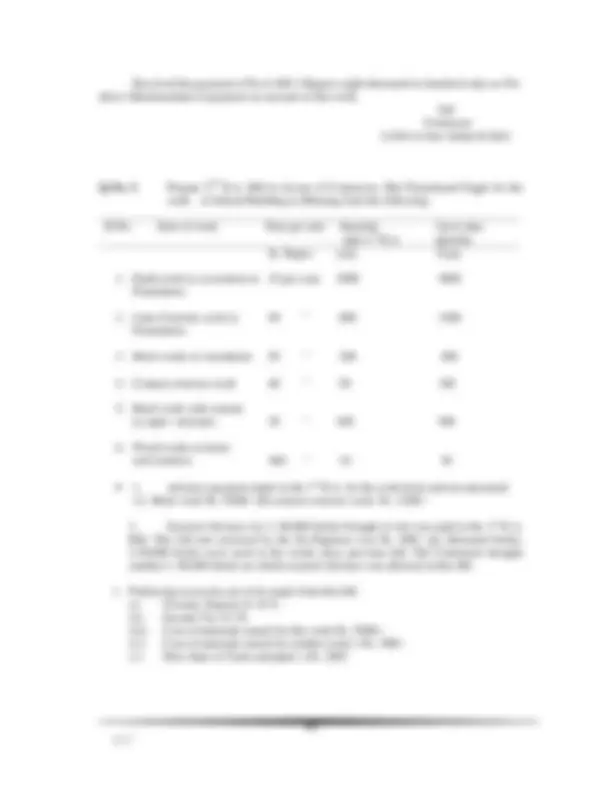
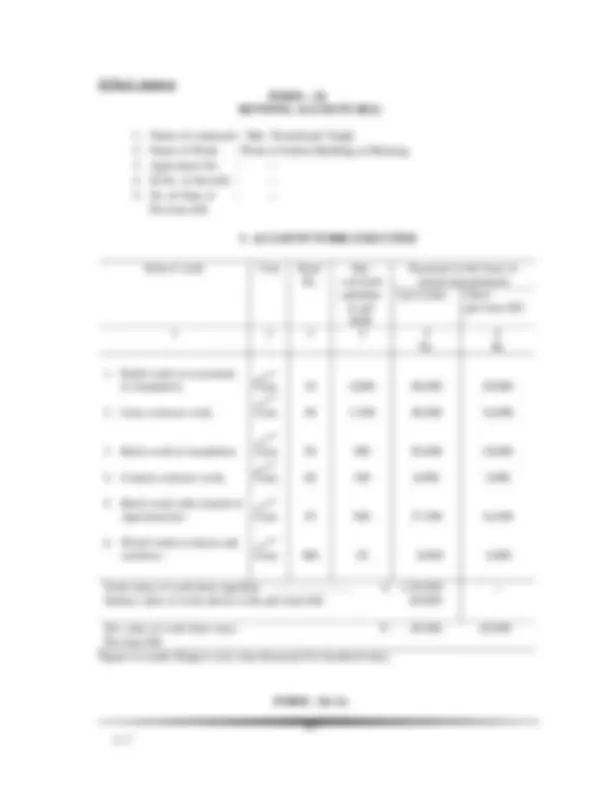
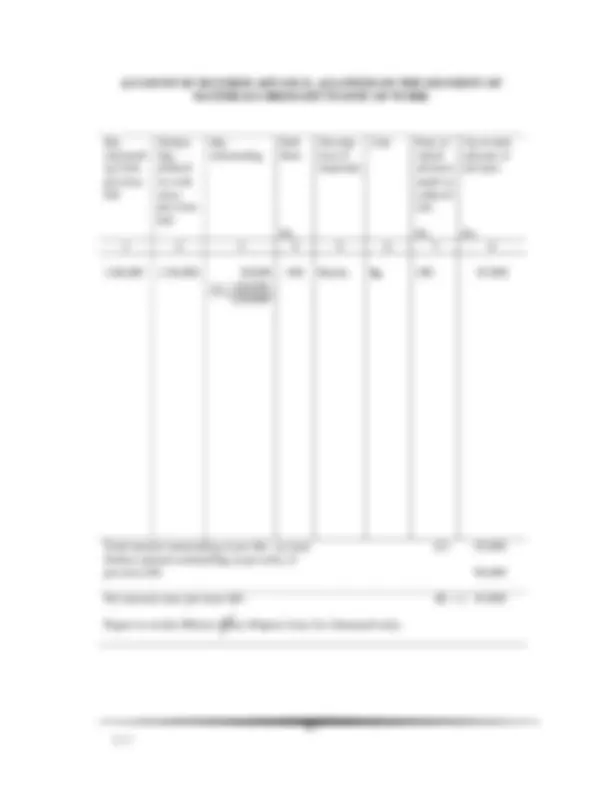
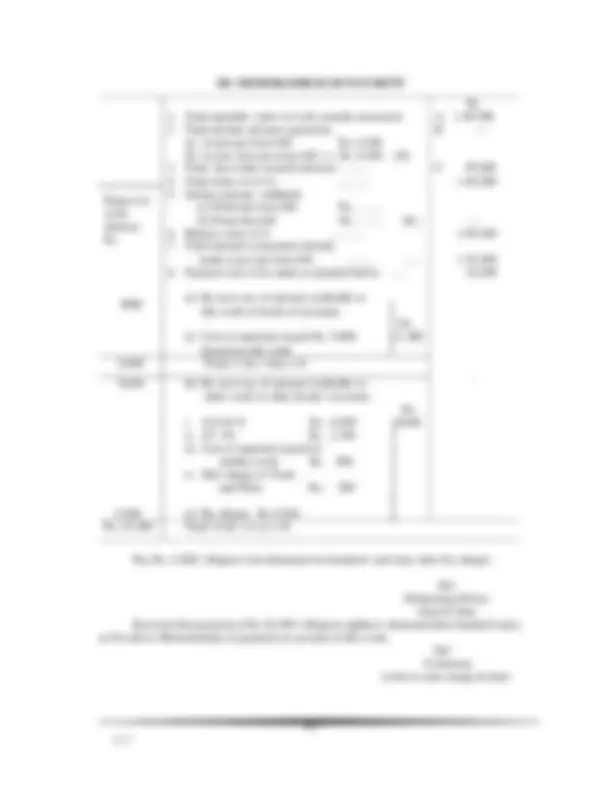
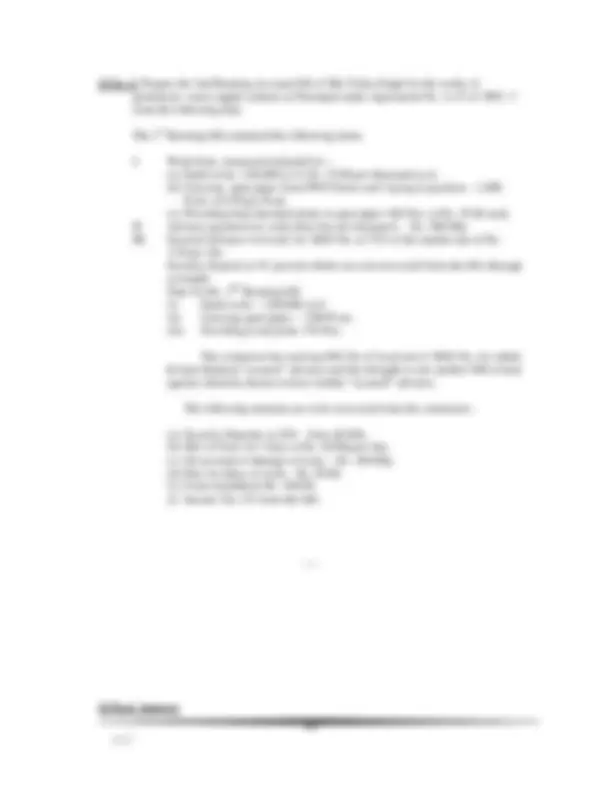
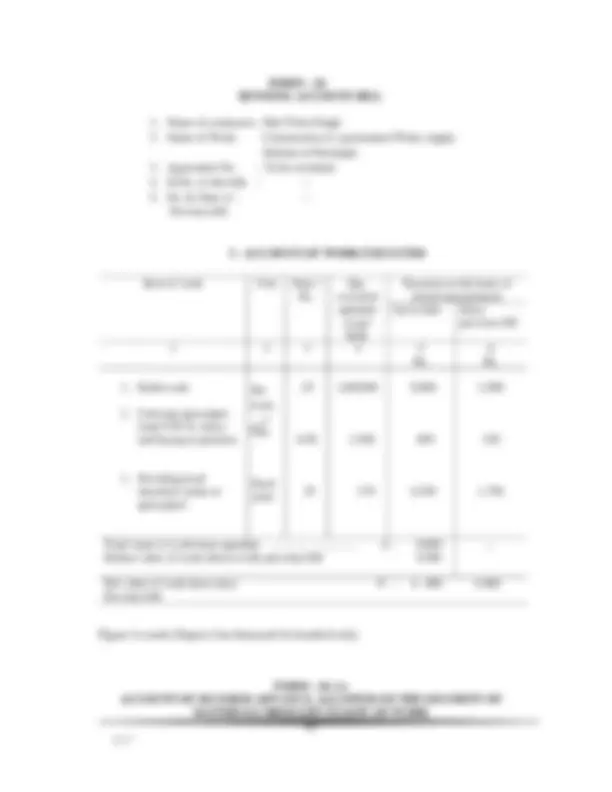
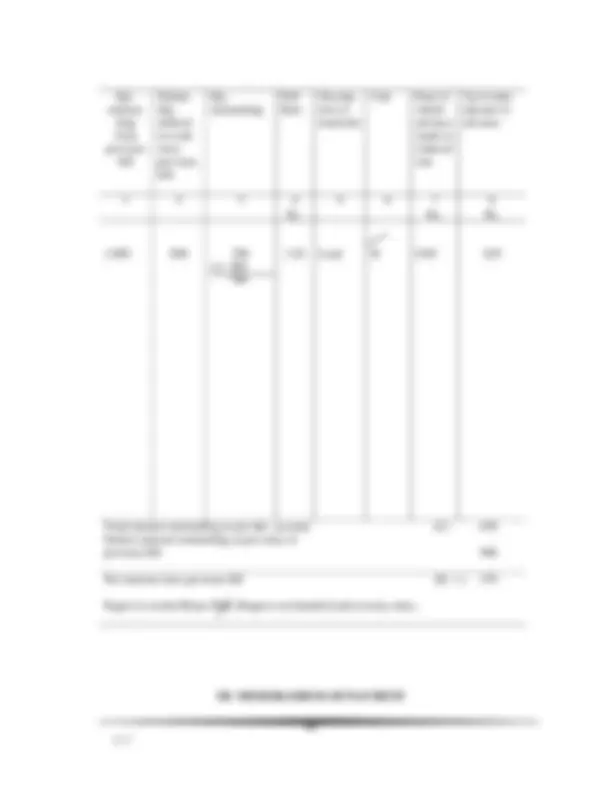
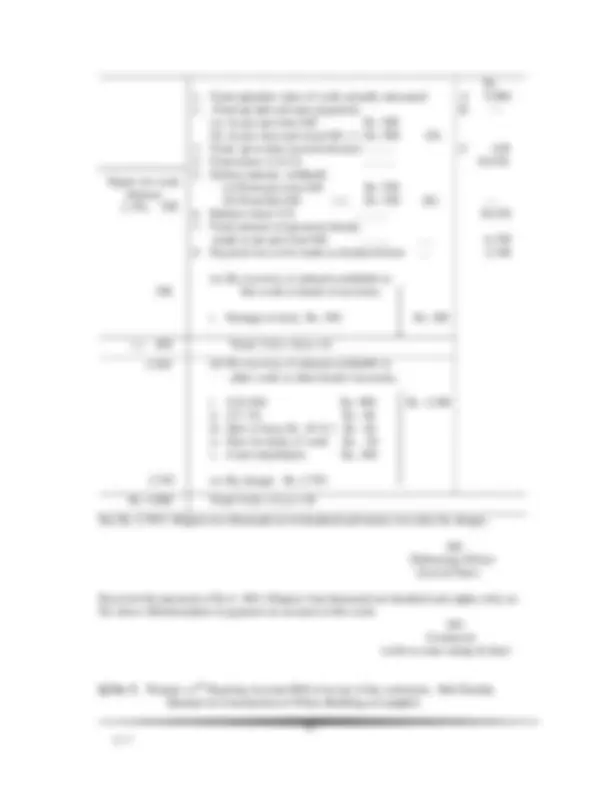
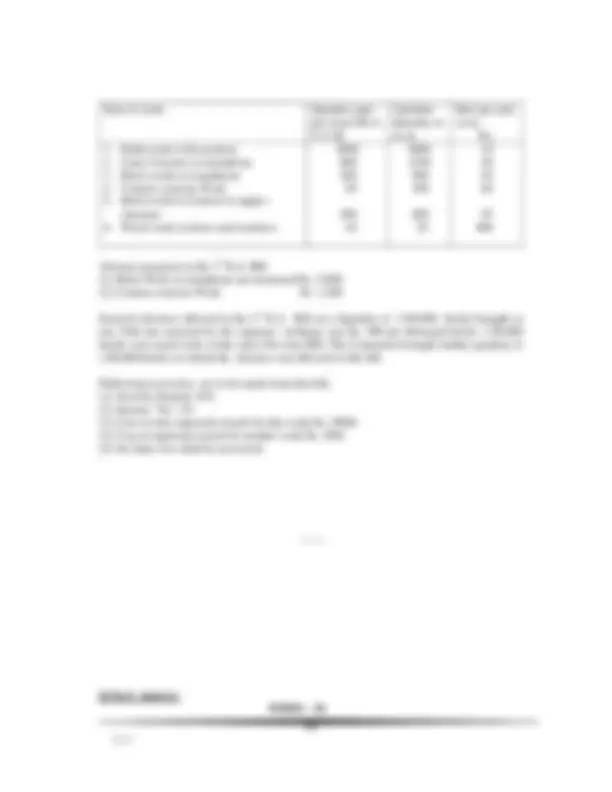
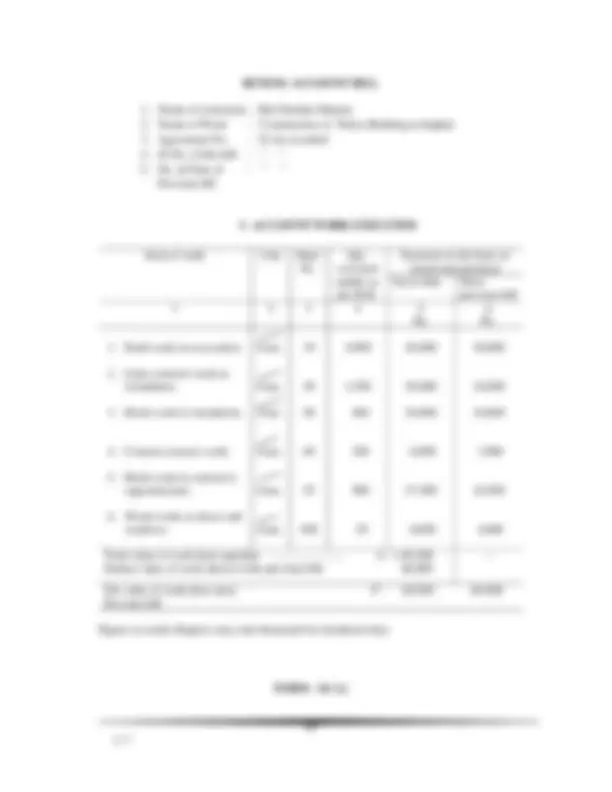
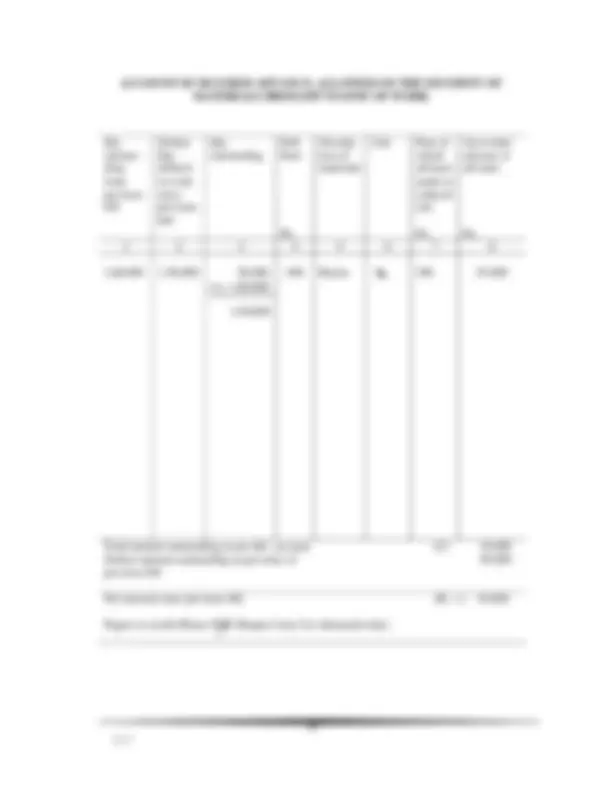
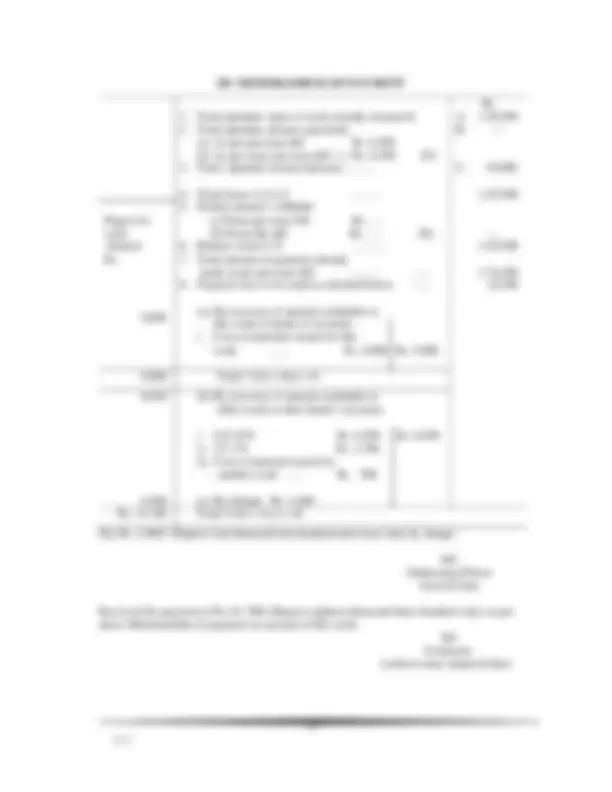
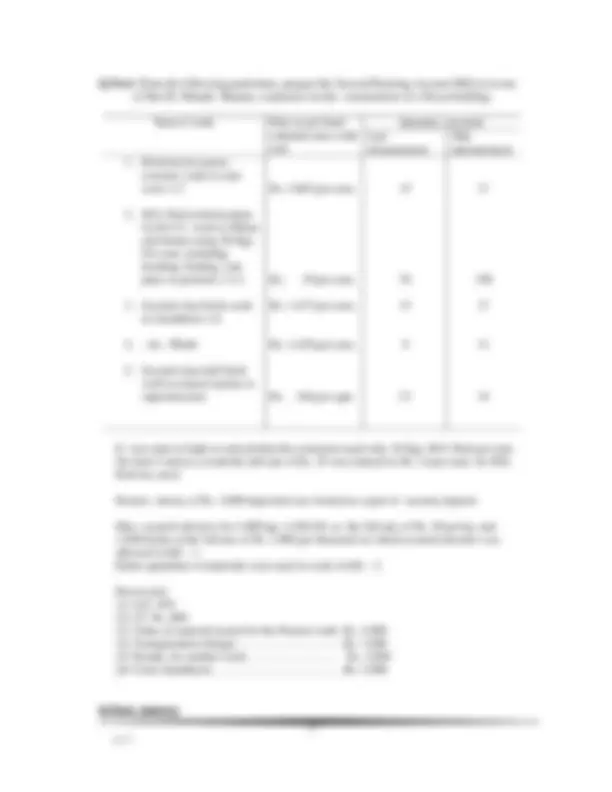
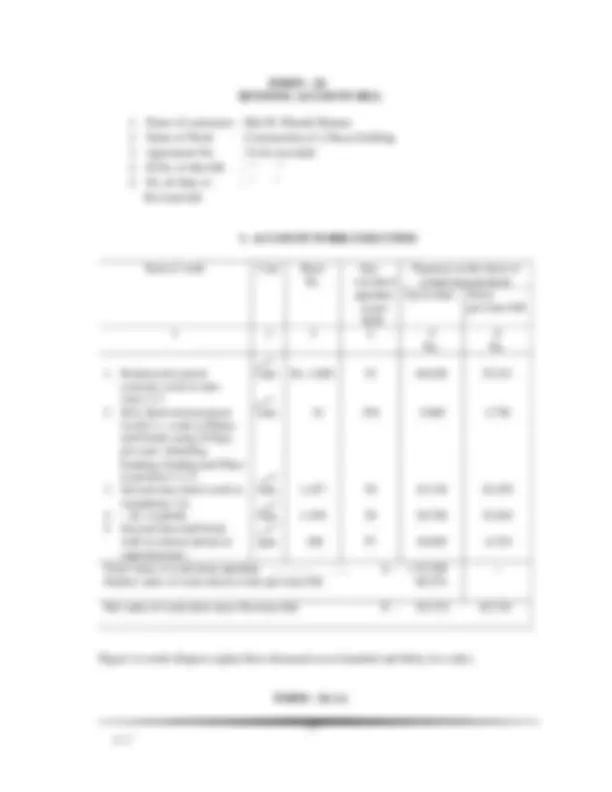
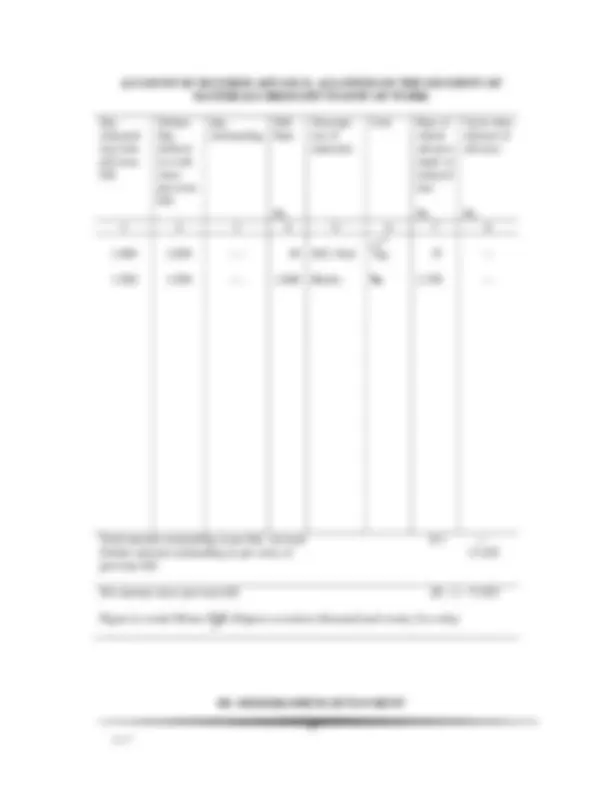
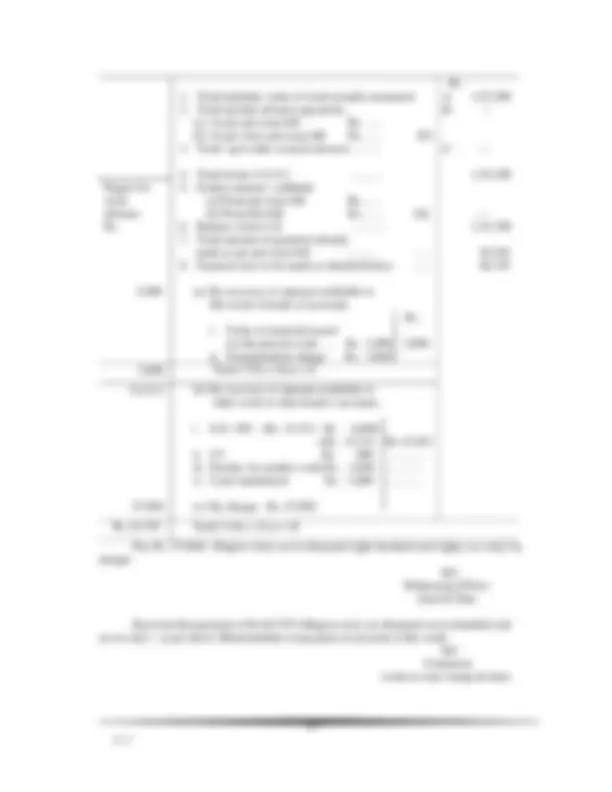
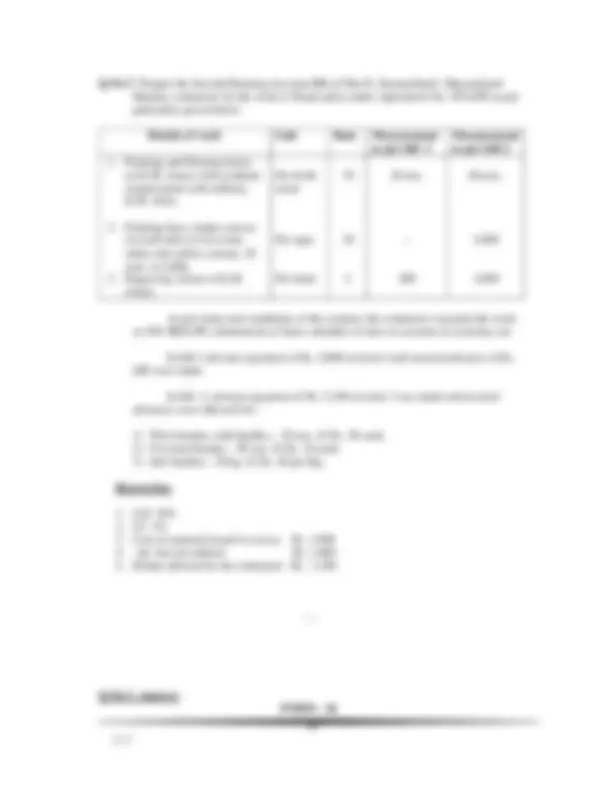
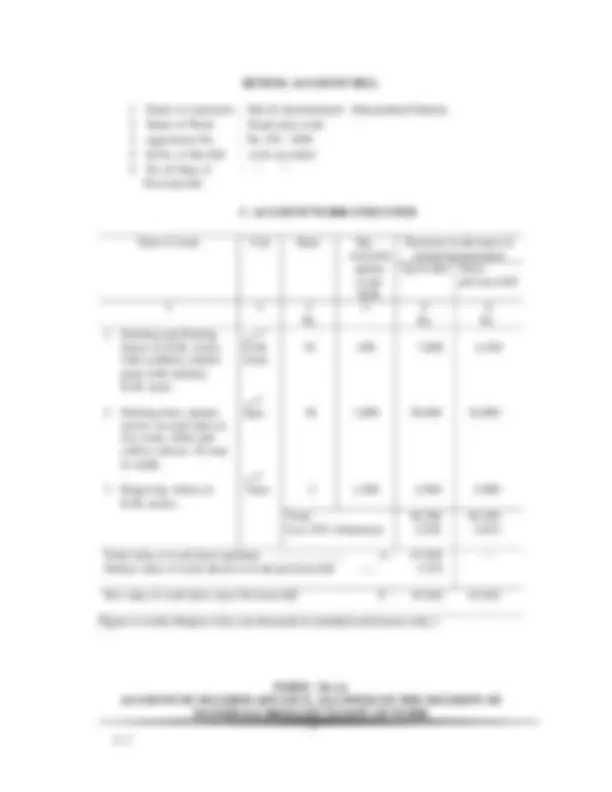
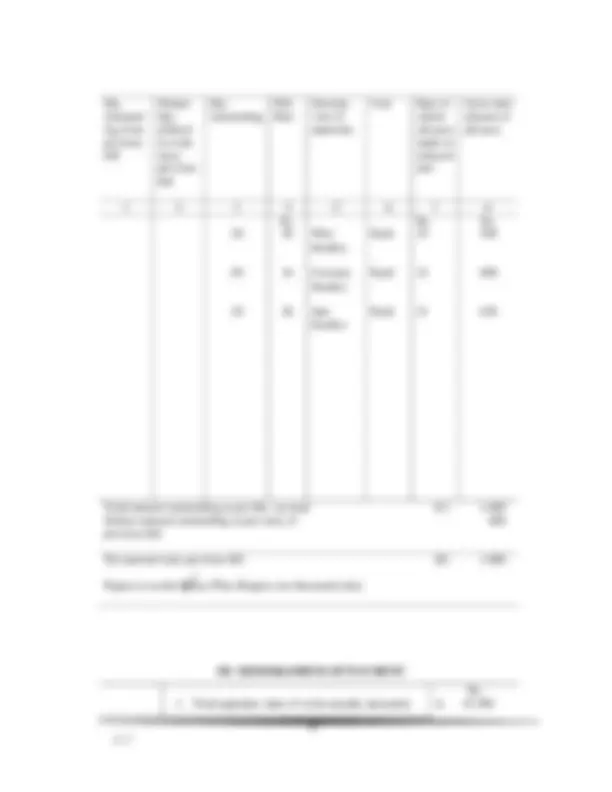
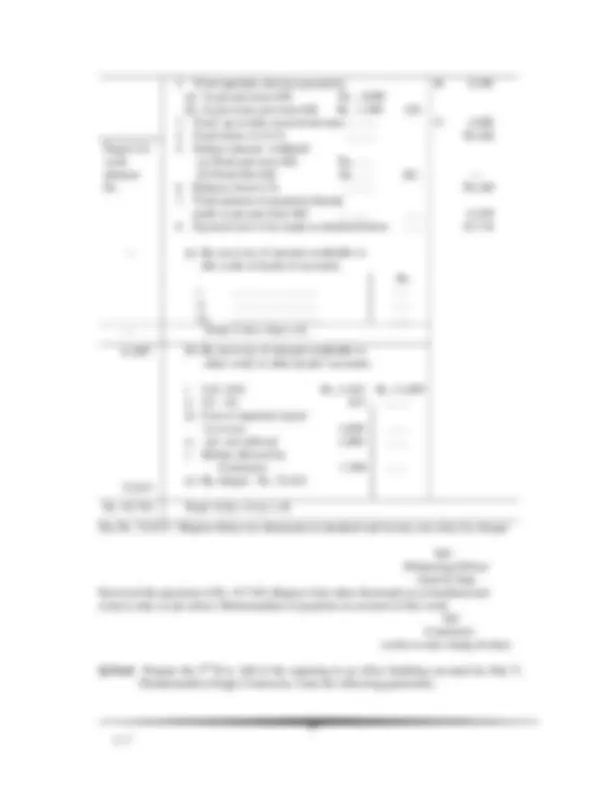
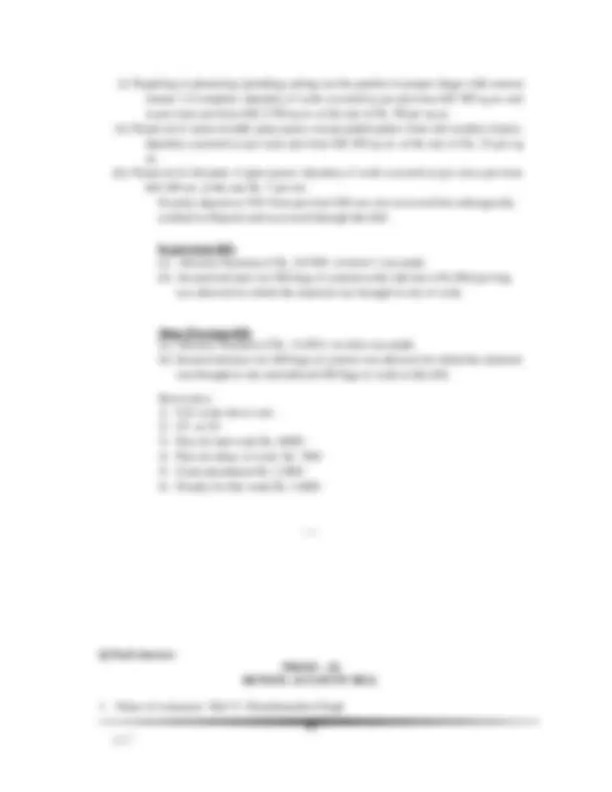
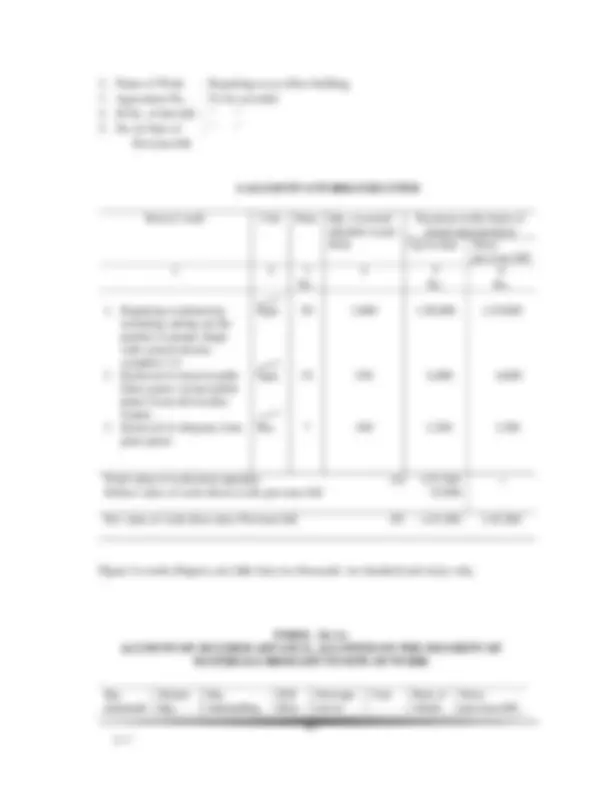
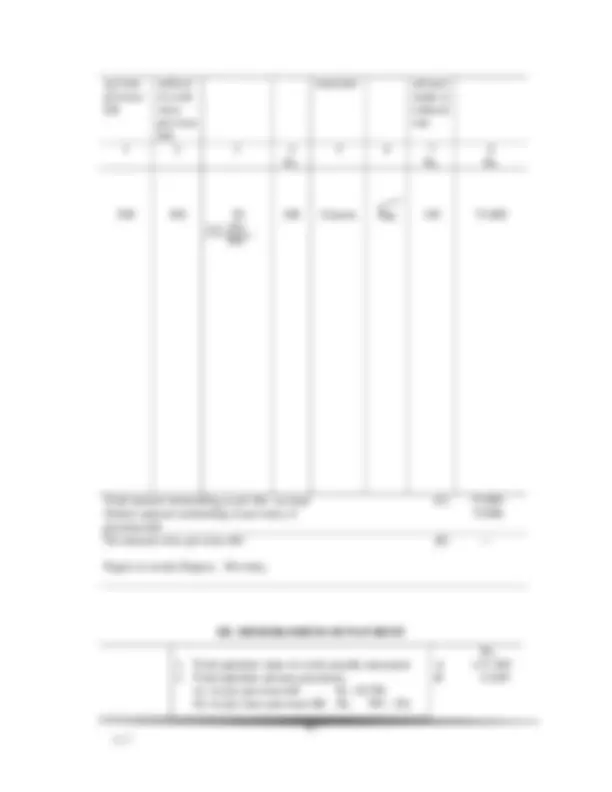
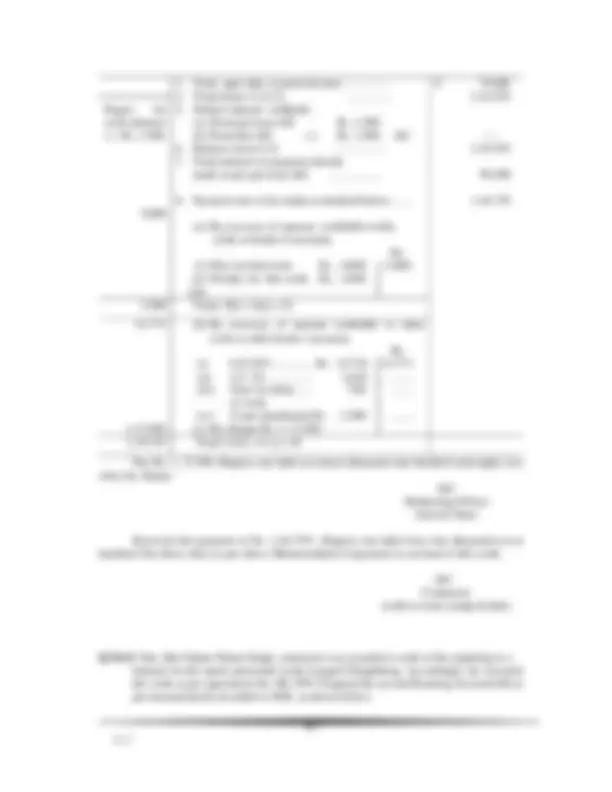
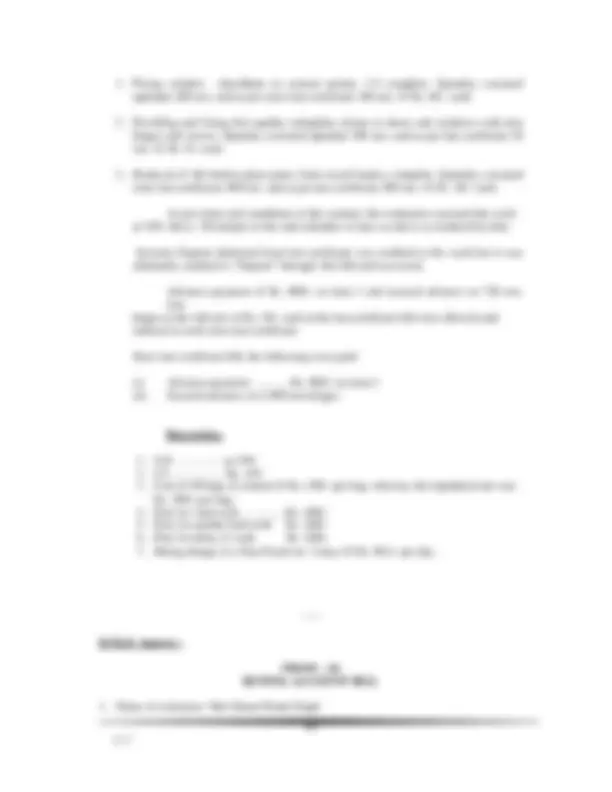
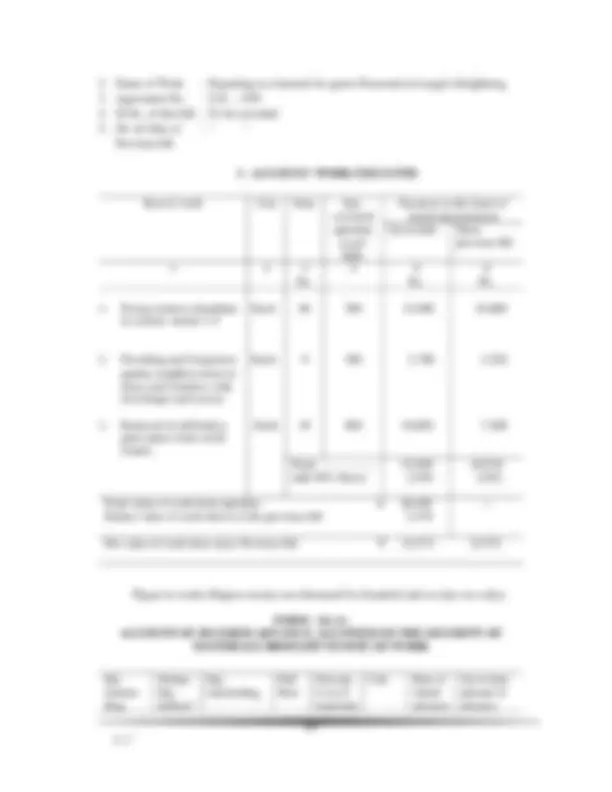
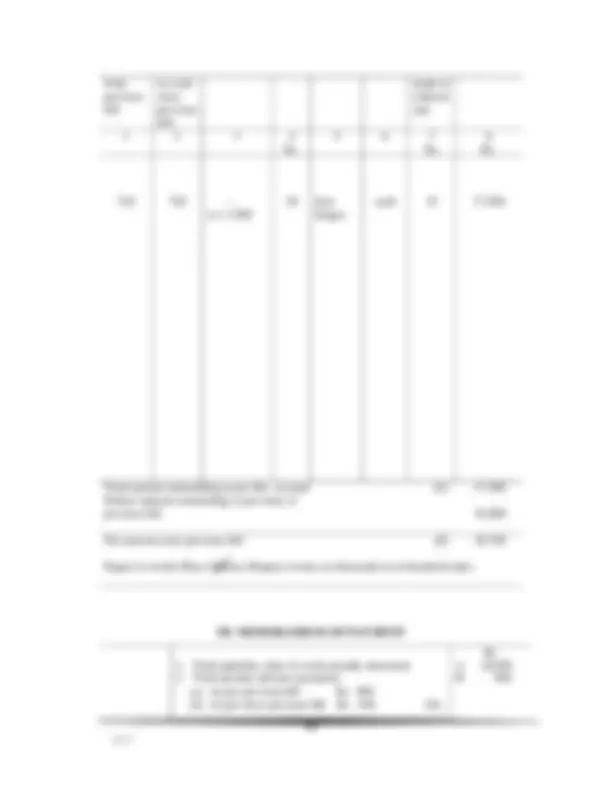
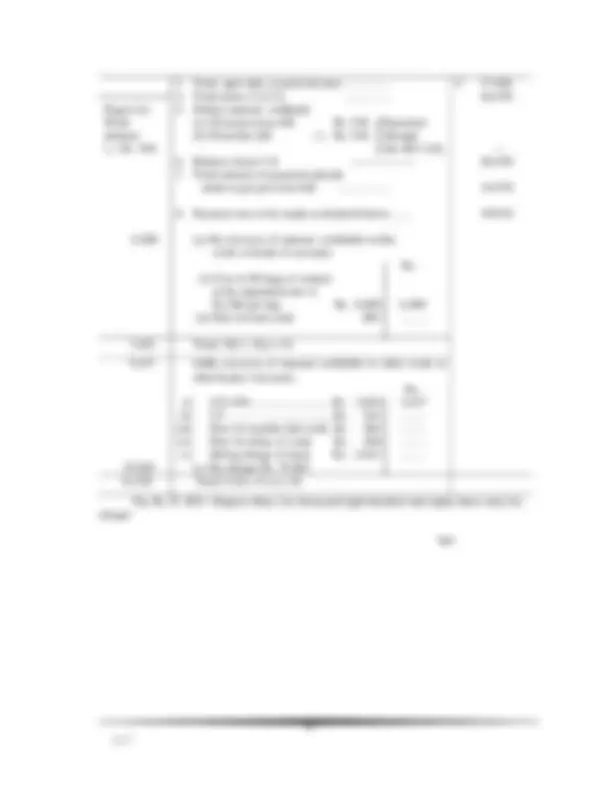
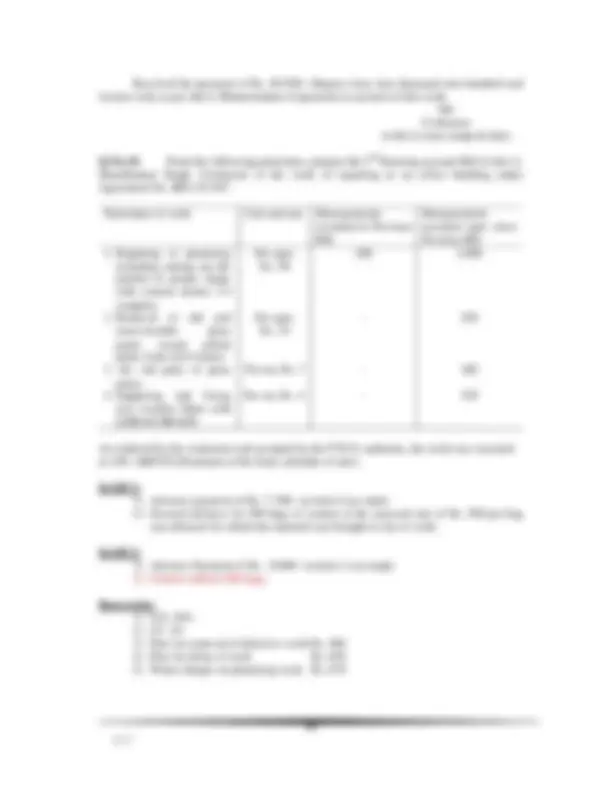
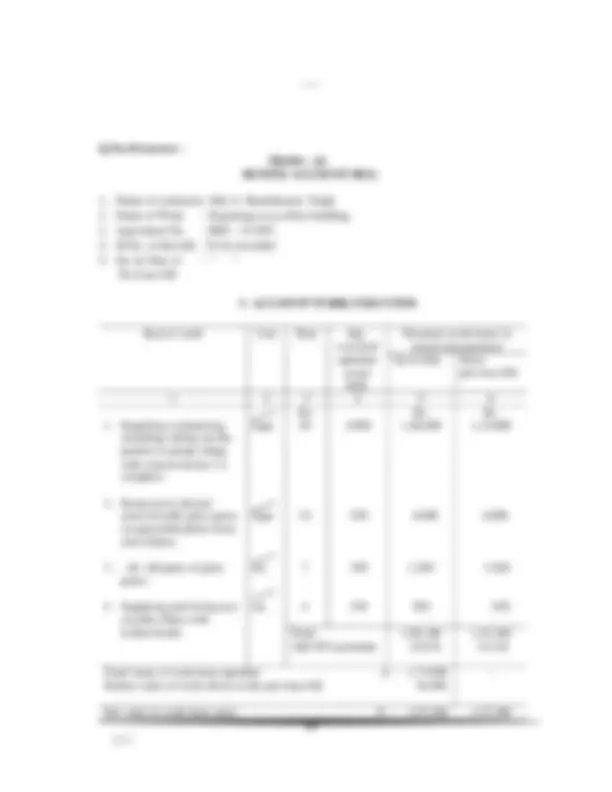
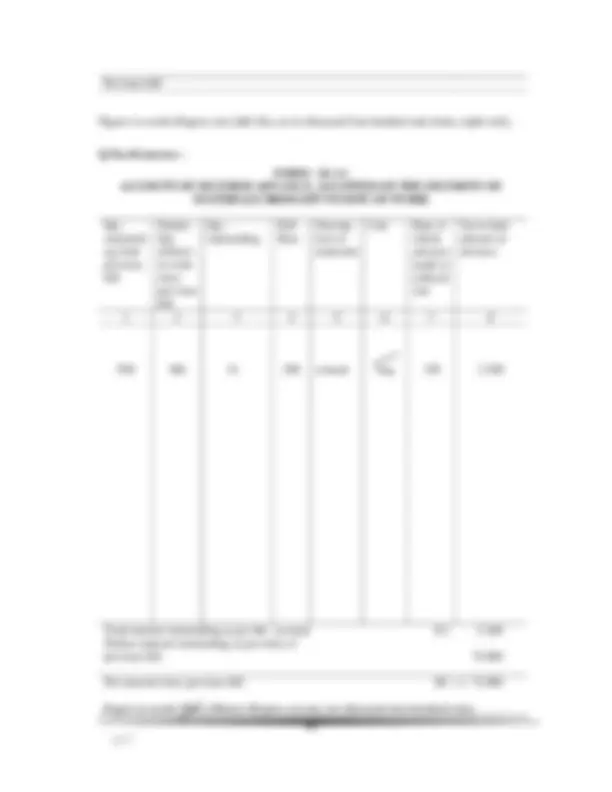
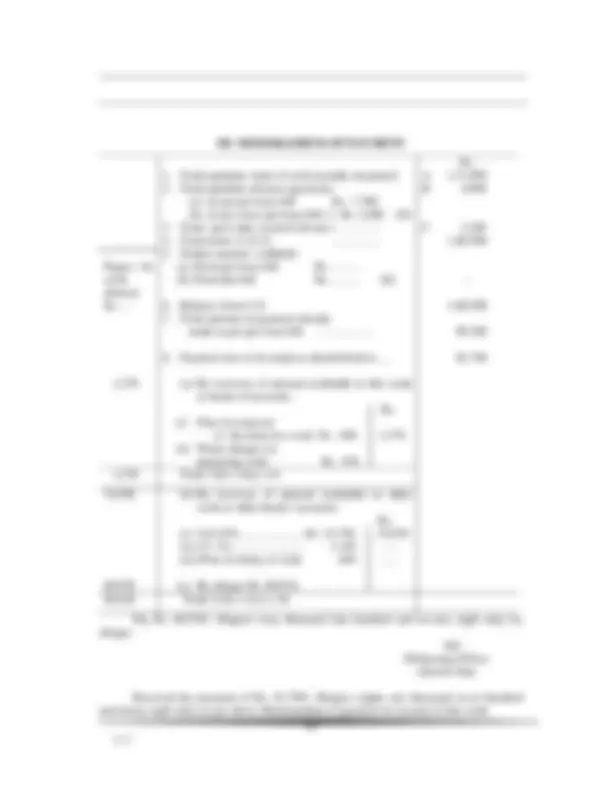
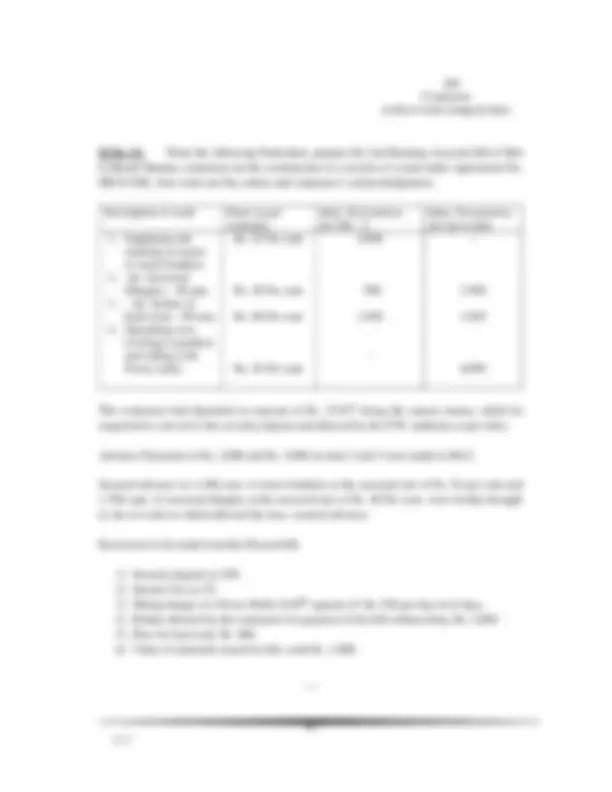
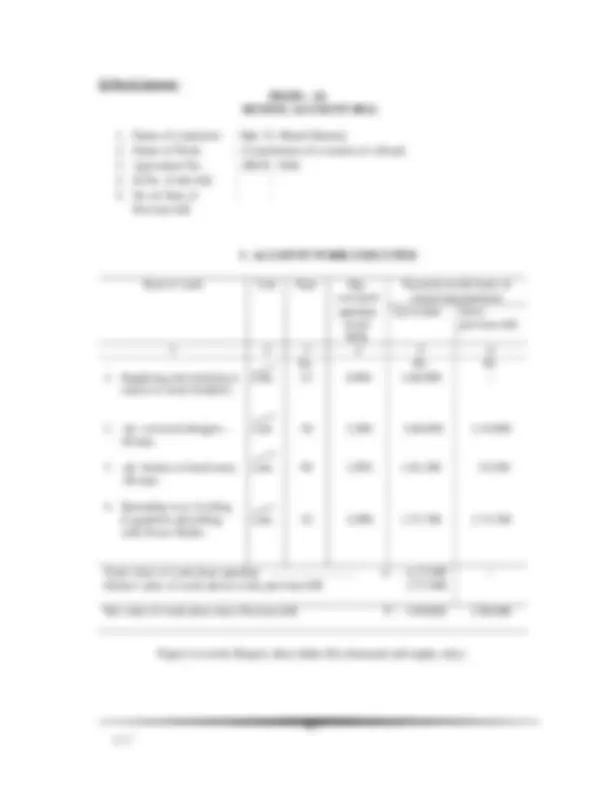
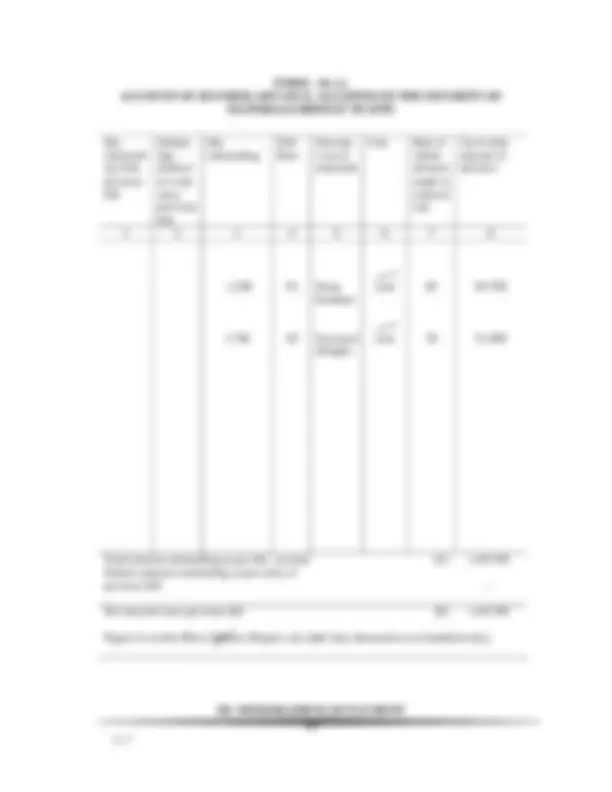
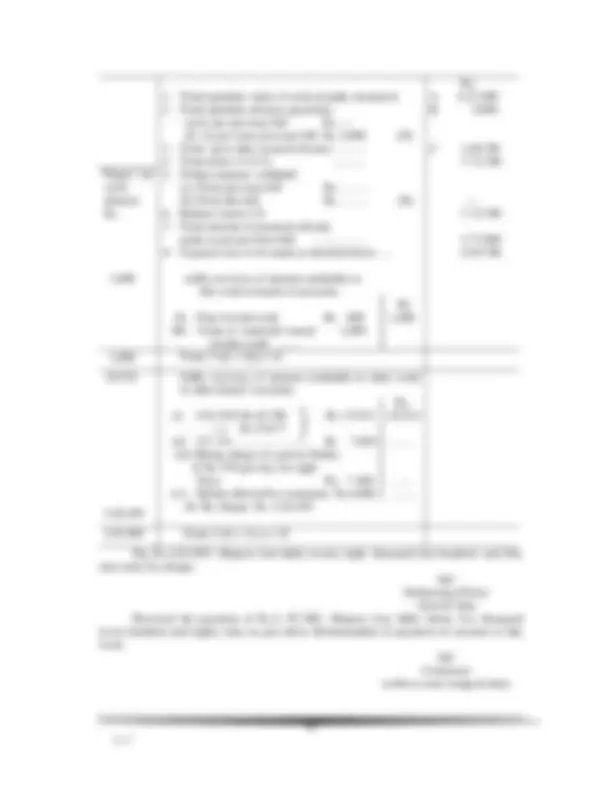
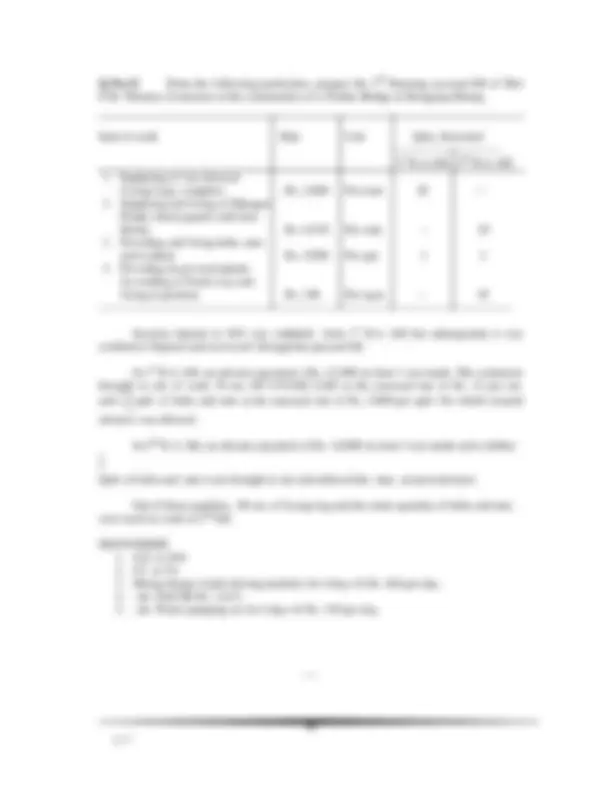
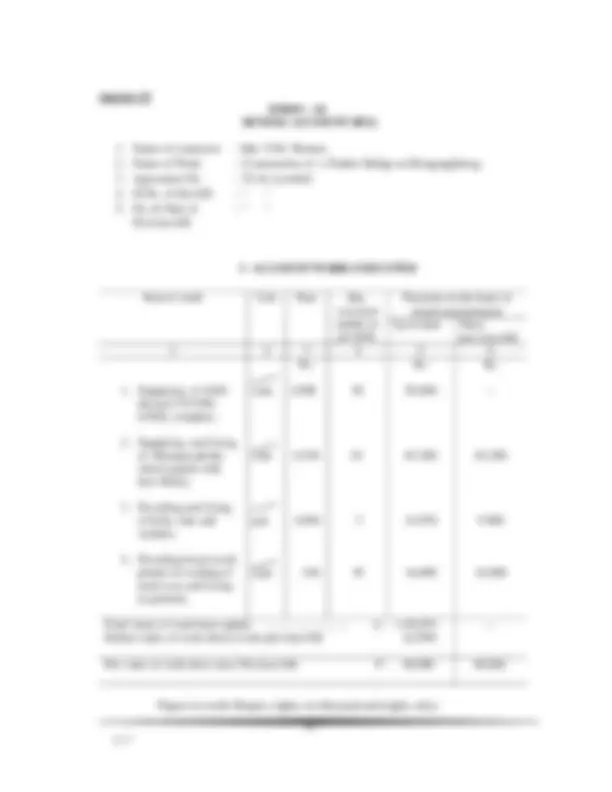
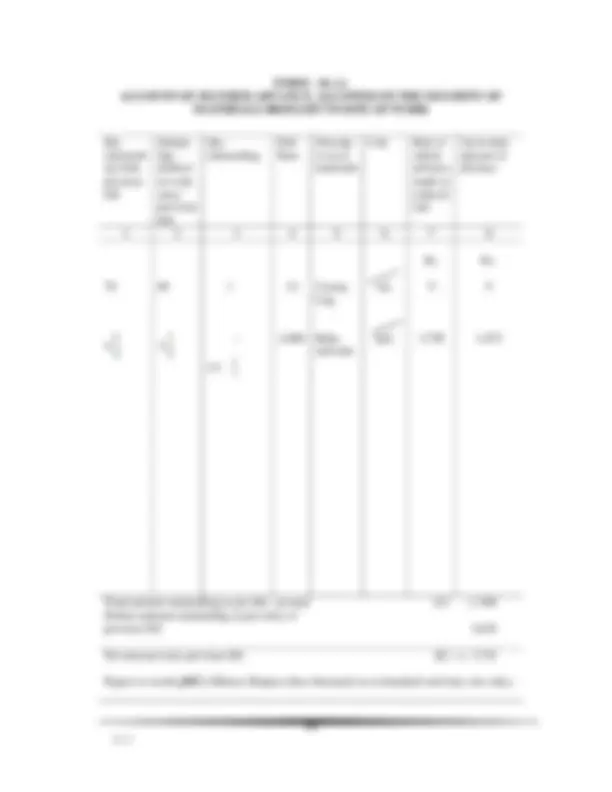
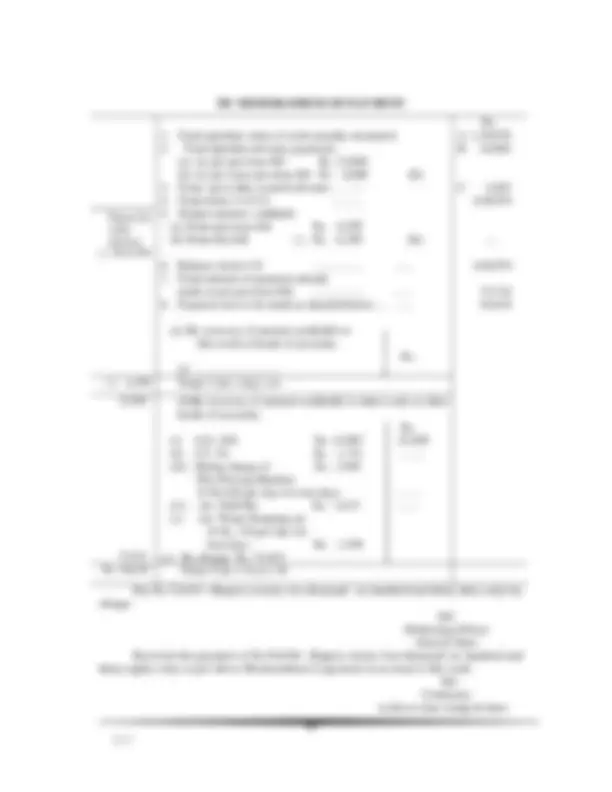
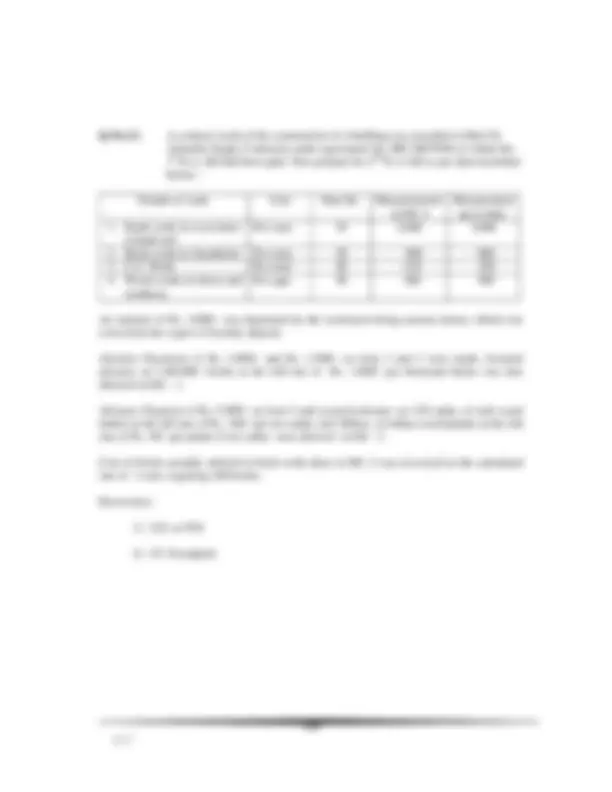
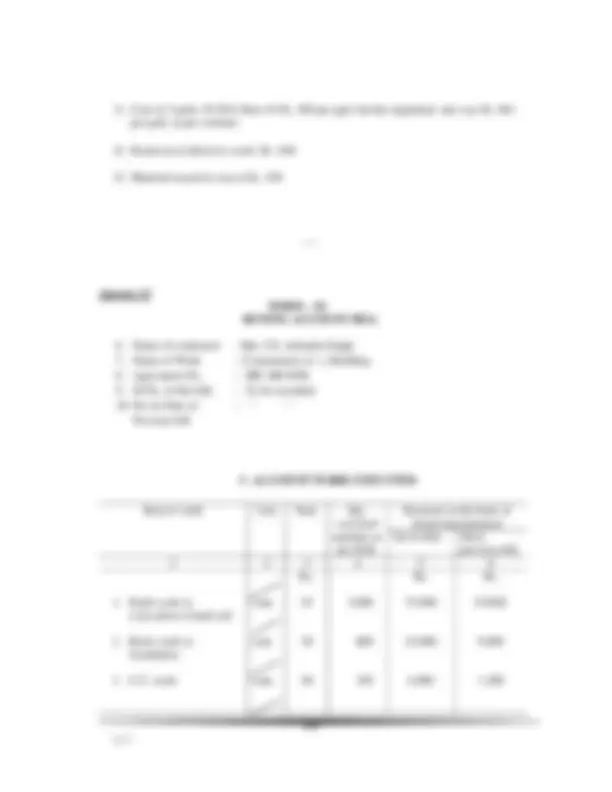


Study with the several resources on Docsity

Earn points by helping other students or get them with a premium plan


Prepare for your exams
Study with the several resources on Docsity

Earn points to download
Earn points by helping other students or get them with a premium plan
Community
Ask the community for help and clear up your study doubts
Discover the best universities in your country according to Docsity users
Free resources
Download our free guides on studying techniques, anxiety management strategies, and thesis advice from Docsity tutors
Cpwa Cpwa theory questin and answers in it answers
Typology: Summaries
1 / 131

This page cannot be seen from the preview
Don't miss anything!





























































































Q. Distinguish between :
(1) Administrative Approval and Technical Sanction :
Ans : The term, Administrative Approval means the concurrence of the competent authority of the Secretarial administrative department concerned of the proposals for incurring any expenditure in the P.W.D on a work initiated by or connected with the requirements of such administrative department requiring the work. Whereas, Technical Sanction is an order of the competent authority in the P.W.D that the proposals are technically sound and its detailed estimates are properly and accurately calculated based on the adequate data.
-Para 2.1.1 (2) and 2.1.1 (59) of CPWA Code.
(2) Advance Payment and On Account Payment :
Ans : Advance Payment means a payment made on a running account bill to a contractor for the work done by him but not measured but on the basis of a certificate of a responsible officer not below the rank of sub-divisional officer. Whereas, the term on Account Payment indicates a payment made on a running account to a contractor for the work done or supplies made by him when the work has been duly measured. -Para 2.1.1 (3) and 2.1.1(37 of CPWA Code.
(3) Appropriation and Reappropriation :
Ans : Appropriation means the assignment of a particular funds to meet specified expenditure included in a primary unit of appropriation. Whereas, Reappropriation means the transfer of funds from one primary unit of appropriation to another such unit. -Para 2.1.1 (4) and 2.1.1(45) of CPWA Code
(4) Deposit Works and Local Works:
Ans : The term, Deposit Works indicates the work of construction or repair, undertaken by the P.W.D on behalf non-Government organisation the cost of which is met not out of government funds, but out of funds from non- government sources which may place at the disposal of the Divisional Officer
either in cash or otherwise. On the other hand, Local Loan Works indicates works executed by the PWD on behalf of non-government organizations or other corporation when the cost is to form part of a loan given to it by government for the purpose for which it was sanctioned.
-Para 2.1.1 (15) and 2.1.1(31) of CPWA Code.
(5) Contingencies (Works) and Contingencies:
Ans : The term, contingencies (Works) denotes the miscellaneous expenditure to the execution of a work which cannot be classified under any distinct sub-head or sub-work of a work yet pertain to the work as a while. On the other hand , contingencies indicate the expenditure incurred in an office which is of the nature of unforeseen charges, incidental charges for the maintenance of an office as an office.
-Para 2.1.1 (12) of C.P.W.A. Code
(6) Direct and Indirect Charges :
Ans : Direct charges mean the charges pertaining to a work, project, or job which are incurred directly for its execution and are included in the regular accounts of work concerned. Whereas, Indirect Charges are those charges which pertain or are incidental to a work, project, workshop job or manufacture job which are not incurred directly or solely in connection therewith and as such it cannot be taken directly into such detailed accounts of it, as are incorporated in the regular accounts of the department.
-Para 2.1.1 (17) of CPWA Code
(7) Direct and Indirect Receipts :
Ans : Direct Receipts denote those revenue receipts which are realized in connection with a work, project etc, by the officers of the P.W.D and are brought to account directly as appertaining to the work or project. Indirect Receipts, on the other hand, are the receipts which pertain to or are incidental to a work or project and cannot be taken directly into such detailed accounts of it, as are incorporated in the regular accounts of the receipts of the department.
-Para 2.1.1 (20) of C.P.W.A Code
(8) (a) First and Final payment and (b) Running Account:
Ans : The term, First and Final Payment indicates a single payment made for a work or job or contract on its completion. The payment is finalised by one payment after completion of the work. Whereas, Running Account means an account with a contractor when the payment for work done or supplies is
Whereas, Sub-work means a distinct unit of a large work when it is sufficiently importance to maintain the accounts thereof separately, e.g. main office building, hostel building, garage, outer pucca wall, residential buildings etc. of the State Academy of Training.
-Para 2.1.1 (54) and 2.1.1(55) of C.P.W.A Code
(12) Works Expenditure and Works Outlay :
Ans : Both the terms are meant to indicate respectively expenditure and capital charges on special services connected with construction, repair and maintenance of work. The charges falling under these categories may be net and any receipts are taken in reduction of expenditure but they do not include the cost of general services, Tools and plant and establishment or any other charges not taken to final heads of account but kept under one of the suspense accounts till cleared.
-Para 2.1.1 (63) of C.P.W.A Code
(13) Advance Payment and Secured Advanced :
Ans : Advance Payment means a payment made on a running account to a contractor for he work done by him but not measured. Whereas, the Secured Advance means an advance payment made to a contractor on the security of materials brought to the site of work for bonafide use on work whose contract is for the completed items of work. -Para 2.1.1 (3) and 2.1.1(49) of C.P.W.A Code
(14) Rate of Cost and Inclusive Rate of Cost :
Ans : Rate of cost indicates generally the total cost of a work or supply divided by its quantity. Such accounts represent the recorded cost per unit, as arrived at by dividing the uptodate final charges on a sub-work, by the uptodate progress(quantity) thereof. Inclusive Rate of Cost, on the other hand, means the rate of cost of the entire work relating to a sub-head including the cost of materials, if recorded separately in the accounts. -Para 2.1.1 (44) of C.P.W.A Code
(15) Departmental Receipts and Departmental Charges :
Ans : Departmental Receipts means the realisation of revenue receipts made by the officers of the departments, and are credited to the Bank as Miscellaneous receipts of the P.W.D. Sale proceeds of certain fruit trees and grass planted on the office compound of the department/Divisional officers, for example, fall under departmental receipts. Whereas, Departmental charges denote percentages on account of establishment, tools and plant, audit and accounts, recoveries by the P.W.D in respect of works executed on behalf of local bodies, other governments and departments etc.
(1) Administrative Approval has been obtained from the authority appropriate in each case.
(2) sanction to incur expenditure has been obtained from competent authority.
(3) a properly detailed design and estimates has been technically sanctioned.
(4) funds to cover the charge during the year have been provided by competent authority – As per G.I.D under chapter- 2 of C.P.W.A Code.
appropriations of funds and then incorporate them in the accounts of the Government.
(4) He is further required to maintain clear accounts of all stores received by him or by his subordinate officials and to make these accounts available for audit by the Accounts officer as and when called for. (5) Under each major head of expenditure, the charges of each work, project or sub-work are recorded separately in the accounts of the Divisional Officers. In the case of works of certain classes e.g. I .Irrigation, etc. commercial undertakings II Quasi-commercial under-takings, such as self supporting workshops. Proforma accounts of all transactions connected therewith are prepared annually by the Accounts officer or by the Divisional officer, as may by required and for this purpose, the receipt pertaining to each work of this class are also shown separately in the divisional accounts. (6) Personal payments to all regular Government employees of the Department are made on bills, presented at the bank in accordance with the general provisions of the C.G.A ( R and P) Rules and are brought to accounts by the Accounts Officer directly from the data furnished to him by the Treasury Officer.
-Para 3.2.1 of C.P.W.A Code
Q. 3 What are the main principles to be kept in view by a Divisional officer in the maintenance of his accounts?
Ans : A Disbursing Officer has to satisfy not only himself, but also the Audit Department. In the maintenance of accounts, a Divisional officer has, therefore, to bear in view the following main principles : (1) that a claim which has been accepted, is valid, that a voucher is a complete proof of the payment which it supports and that an account is correct in all respects. (2) that all accounts should be so kept and the details so fully recorded that they can satisfy any enquiry about the economy or the bonafides of the transactions. (3) that the records of payment, measurement and transactions in general must be so clear, explicit and self-contained as to be producible as satisfactory and convincing evidence of facts, if required in a Court of Law. (4) that all transactions involving the giving or taking of cash, stores, other properties, rights, privileges and concessions which have money values should be brought to account. (5) that the records of transactions of receipt or expenditure should be made at once under the final, debt, deposit or remittance head to which it pertains, if that be known. If it is not known, it should be classified temporarily under “P.W. Deposit” if a receipt, or under “Miscellaneous Works Advances”, if a charge.
-Para 3.2.2 of C.P.W.A Code
Chapter 4
Relations with Accounts officer
Q. 1 Who is the senior member of office establishment of a P.W. Division?
Describe the functions and duties of a Divisional Accountant?
Ans : The Divisional Accountant is treated as a senior member of office establishment of a division. The Divisional Accountant performs the three-fold functions of an Accountant, an Internal checker and a Financial Assistant.
(CHAPTER 5)
APPROPRIATIONS
Q.1. Write short notes on:
(i) Appropriation and (ii) Reappropriation
Ans: (1)Appropriation : Appropriation means the allotment of a particulars sum of money (fund) by a competent authority from funds placed at his disposal to meet specified expenditure included in a primary unit of appropriation. Para 2.1.1 (4) of C.P.W.A Code
(ii) Reappropriation: Reappropriation of funds from one primary unit to another primary unit within a Grant may be sanctioned by a competent authority (Departments/Administrators/heads of Departments) before the close of financial year to which such Grants or Appropriation relates. However, there are various instructions under D.F.P.Rs. restricting such a Reappropriation, e.g. Reappropriation not permissible between “ charged expenditure” and “voted expenditure” or between “Plan and “Non-Plan” or “Major works” and Other items of expenditure”.
Funds as a whole, will not be reappropriated from any unit with the intention of restoring the diverted reappropriation to that unit when saving becomes available under other units later in the financial year.
Para 5.4.1 (a) of C.P.W.A code.
Q. 2 What are the conditions to be observed before incurring expenditure?
Ans: The following conditions are to be observed by a Divisional Officer before incurring expenditure: I. Sanction, either special or general of competent authority has been obtained authorising the expenditure. II. Funds to cover the charges during the year have been provided by competent authority. III. The expenditure conforms to the relevant Provisions of the constitution and to the financial rules, regulations and orders issued by Competent Authority. Para 5.1.1 of C.P.W.A Code
Q.3 It is an important function of the Divisional officer to keep a constant watch over the progress of expenditure? How is this function discharged by him in practice?
Ans: The following plan should be adopted by a Divisional Officer to keep a constant watch over the progress of expenditure:-
(i) The progress of expenditure on works or other items for which there are specific appropriations, should be watched individually monthly by month, through the Register of Works, Contingent Register and other relevant accounts. (ii) In respect of works or items, lump sum appropriations for which are placed at his disposal, he will watch the progress of expenditure against appropriation by the maintenance of a record (i). of the expenditure in the form of a progressive abstract, showing month by month the uptodate expenditure of the year and (ii). Of the Grants, in the form of a register showing the appropriation and reappropriation ordered from time to time.
(iii) Effect of undischarged liabilities on individual and lump sum appropriation should be watched.
(iv) Anticipated credits which will ultimately be taken in reduction of expenditure chargeable against any individual or lump sum appropriation should also be taken into account.
(v) The Review is of special importance in the last three or four months of the years. If desired, this review may also be conducted collectively in respect of each primary or secondary unit of appropriation by the maintenance of register as in clause (ii) above.
-Para 5.5.2 of C.P.W.A Code
Q.4 What are the different classes into which undischarged liabilities are divided?
Ans: Undischarged liabilities are divided into the following four classes:
(i) Those outstanding in the suspense account, relating to contractors and labourers, in the account of works. (ii) Those outstanding in any of the regular suspense accounts of the division. (iii) Outstanding debts adjustable by book transfer and (iv) Matured claims of contractors, suppliers etc. awaiting settlement and all unmatured claims before the closed of the year.
-Para 5.5.2 (e) Of C.P.W.A Code.
In the case of revalidation, no further action is necessary except sending the revalidated cheque to the party concerned.
In the case of issue of a fresh cheque, counter reference should be given in the old and new counterfoils as “fresh cheque issued in lieu of time barred cheque No………………. dated ………………cancelled”.
If it is necessary to cancel a cheque before issue, the cheque should be destroyed by the Divisional Officer personally and the cancellation and destruction recorded in the counterfoil under the signature of the D.O. When the cheque is issued and latter withdrawn, a note on the counterfoil should be made and the cheque duly defaced and sent to the P.A.O. The entries in the accounts should be suitably reversed by minus entry in the progressive total in the Register of Cheque Issued with a note against the original entry.
-Para 6.2.10, 6.2.11 and 6.2.13 of C.P.W.A Code.
Q. 4 What as the procedure for issuing receipts to individual or party who tendered money at the Divisional Officer?
Ans : (i) When money is received by a Government officer on behalf of Government, it should at once be brought to account in the Cash Book. And a receipt in Form 3 should be issued to the payer unless Government authorise the use of Cash Memo, in Form 3 A in any particular case.
(ii) If, however, the amount be realised by recovery from a payment made on a bill or other voucher setting forth full particulars of the deduction, a receipt should be granted only if specially desired by the payer, but the fact of the recovery having been made by deduction from the payment voucher should be clearly recorded on the receipt.
Final receipt for private cheques and drafts on local banks accepted under proper authority should not be given to the payer until they have been cleared.
There are exceptions as given before.
(i) In respect of cheques and Bank Drafts received in settlement of inter- divisional transactions which bear the endorsement “Payment by Book Adjustment only”, it is not necessary to issue receipts in Form 3, as the acknowledgement given in Form 4 will serve the purpose. (ii) A receipt in Form 3 need not be issued for sale of tender forms. Para 6.3.1 and notes thereunder
Q. 5 Is it permissible to utilise departmental receipt towards departmental current expenditure?
Ans: Moneys realised by departmental officers should be credited as soon as possible in the accredited bank as misc. receipts of the department. It is permissible
to utilise the receipt temporarily for current expenditure instead of obtaining fresh cash by cheque for the amount utilised. But before the end of the month, he must send to the bank a cheque for the amount used drawn in his own favour and endorsed by himself with the words “Received Payment by transfer credit of the P.W.D”. Para 6.3.5 of C.P.W.A Code
Q.6. What are the important duties of a disbursing officer in respect of verification of entries in his cash Book?
Ans: The following are some of the important duties of a disbursing officer in respect of verifications of entries made in his cash book:
(1). To compare each entry of payment with the gross amount chargeable as shown in the connected voucher, seeing at the same time that it bears (i). a payment order recorded by himself and (ii). the certificate of disbursement signed by himself or an authorized subordinate and ticking off each voucher as it is passed.
(2). To see, while examining the postings and of vouchers on the payment side, that all deductions shown in the vouchers are posted as receipts on the receipt side of Cash Book.
(3). To compare each entry of payment into the Bank with the bank challan and satisfy himself that the amounts have been actually credited into the Bank.
(4). To verify the totalling of the cash book or have this done by some principal subordinate (other than the writer of the cash book) who should initial and date it as correct.
(5). To verify the total of the postings in the “ Bank” column on the payment side by reference to the memoranda recorded by himself on the reverse of the counterfoils of chaques.
(6). To count the actual balance of cash in each chest on the last working day each month. If it is not possible , the cash balance may be counted on the first working day of the following month before disbursement is made on that date.
Whenever, the balance as per cash book is found to be incorrect, the errors should be detected and set right at once. The cash found short or surplus should be brought to account in the cash book as a payment or receipt under Misc. works advances or P.W. Deposit as the case may be. -Para 6.6.5 to 6.6.7 of C.P.W.A Code.
Q.7: What are guiding principles which are to be observed by a P.W. Officer before drawing chaques? Or
What are the safe-guards against fraudulent use of cheque forms?
from whom the imprest is held in time to enable him to incorporate the account in his Cash Book before it is closed for the month on the date fixed for the purpose.
A Temporary Advance may be differentiated from an Imprest in the sense that the latter is a standing advance of a fixed sum of money. Whereas, the former is an advance made temporarily by a disbursing officer to a subordinate to enable him to make a number of specific petty payments on a muster roll or other voucher which has already been passed for payment. In the case of imprest, payments are made before obtaining the Pay Orders of the recouping officer.
The imprest holder is responsible for the safe custody of imprest money and he must at all times be ready to produce the total amount of the imprest in vouchers or in cash.
-Para 6.6.8, 6.6.9 to 6.6.11 of C.P.W.A Code.
STORES
Q.1. What is the fundamental principle on which the accounts of stores are based? Specify the main categories of stores?
Ans: Fundamental principle on which the accounts of stores are based, is as under:
(1). The accounts of stores are based on the fundamental principle that the cost of their acquisition should be debited to the final head of account concerned or the particular work for which they are required , if either of these can determined at once, otherwise it should be kept in a suspense account pending clearance, as the materials are actually issued, by debit to specific heads of account or works.
(2). In accordance with the above general rule, the cost of the supply of tools and plant for the general use of the Division, is debited at once to the minor head “Machinery and Equipment” sub-ordinate to the major head under which such charges of the Division are classified. Any special tools and plant, which are required not for general purposes but for a specific work, are debited to that work or project.
(3). Similarly, all roadmetal required for the maintenance of a road or section of a road is debited at once to the sub-head “Maintenance and Repairs” subordinate to minor head under the major head concerned i.e. “ 3054 - Roads and Bridges” against the estimate sanctioned for the collection of it. When roadmetal is acquired specially for use in the construction of a road or other work, its cost is debited to the estimate for such construction.
(4). In the case of other materials when purchases are made for the requirements of works; generally, the cost is accounted for under the suspense head “ Stock”. Materials purchased specially for a work are, however, debited to that work.
Stores fall into two distinct categories as shown below:
(1). Stores debited to suspense – (i) stock. (2). Stores debited to final heads – (ii) Tools and Plant. (iii) Roadmetal, (iv) Materials charged to works.
-Para 7.1.4 and 7.1.5 of C.P.W.A Code.
Q.2. What are the sources from which materials are generally received on stock of Public Works Division and for what purposes they are issued from stock?
Card, Form 8. The signature of the officer receiving the materials should be obtained in the space in the indent.
(4). Out of four copies, one copy of the indent should be retained by store keeper of the supplying Division as a voucher in support of the entry in the Bin Card, the second copy being returned at once to the indenting officer. The third and the fourth copies of the indents should be sent to the Divisional officer for further action. -Para7.2.1, 7.2.4, to 7.2.11 of C.P.W.A Code.
Q.4. What principle should be observed in fixing the rate at which an article of stock should be issued to works and contractors?
Ans:. Materials are issued from stock to works and contractors at a rate, known as Issue Rate, which is assigned to each new article as it is brought on stock.
The issue Rate is fixed on the principle that the cost to be charged to works on which materials are to be used should approximately equal the actual cost of the stores and that there may be no ultimate profit or loss in the stock account. It provides, besides the original price paid and the cost of carriage etc. for the storage charges, i.e. charges incurred after the acquisition of stores, on work-charged establishment employed on handling and keeping initial accounts, the custody of stock and maintenance of stores godown etc.
The issue rate of an article of stock is fixed at the beginning of each year. Normally, this rate remains constant throughout the year, but purchases are made, variations in costs should be watched and if there are any material variations in the purchase rate, the issue rate can be revised earlier at the discretion of the Divisional officer. It should , however, be seen that the issue rates are kept within the market rates.
When the issue rate is appreciably less than the market rate, the following precautions should be taken in addition to any restrictions on sales or on issues outside the Division which the Divisional Officer may prescribe;
(a). Issues to contractors and sales shall be made at market rates. (b). issues to other Divisions and departments may be made at a rate higher than Issue Rate.
-Para 7.219 to 7.2.21 of C.P.W.A Code.
Q.5. What is Priced Stores Ledger? How is profit and loss on stock adjusted in accounts?
Ans: An account is maintained in the Accounts Branch of the Divisional Officer to record day-by-day the transactions relating to each item of stock. This account is maintained in Form 12 - Priced stores Ledger, which will have different sections or sets of pages for different articles of stock with columns for receipts, issues and
balances for both quantities and values. Separate Ledgers should be maintained for article falling under each sub-head of stock.
All items of receipts and issues should be entered in the Ledger from the copies of Goods Received sheets and the Indents which are received daily from the sub-divisions. At the end of day’s postings, the balances under each article should be worked out in respect of quantities as well as values.
The Ledger should be closed for both quantities and values at the end of each month. An abstract of total receipts, issues and balances is worked out for each sub-head monthly which should agree with the Summary of Stock Receipts and the Summary of Indents.
At the end of each year, the amount of annual excess or shortfall representing the differences in values due to revision of rates, etc. should be worked out Proforma and credited to revenue (or as a receipt on capital account) or charge off as “ Losses on Stock” as the case may be. -Para 7.2.31 to 7.2.34 of C.P.W.A Code
Q. 6. How is the Tools and Plant Ledger maintained? How is it posted?
Ans: A consolidated account of the receipts, issues and balances of Tools and Plant should be maintained in the Divisional office in Form 15, Tools and Plant Ledger. The account should be maintained in three parts :
Part I – For articles in hand. Part II - For articles temporary lent or sent out. Part III - For shortages awaiting adjustment.
In Part I, articles should be grouped under the prescribed sub-heads. In Part II, the entries should be made in a separate section for each contractor or other person to whom the articles are lent or sent out for repairs etc.
Part III is brought into use only if any shortages come to notice. The Tools and Plant Ledger should be posted in the following manner :
(i) Part I and Part II of the ledger should be posted from the office copies of the Tools and Plant Received Sheets and the Tools and Plant Indents as and when a transaction takes place. (ii) Each separate transaction connected with articles lent or sent out, should further be posted in Part II in the section reserved for the contractor or person concerned, articles lent etc. being shown under “issues” and those received back under “receipts” -Para 7.3.7 and 7.3.8 of C.P.W.A Code
Q. 7. In what respect does “Stock Accounts” differ from “Tools and Plan Account”? or How does “Stock Account differ from that “Tools and Plant Account”?